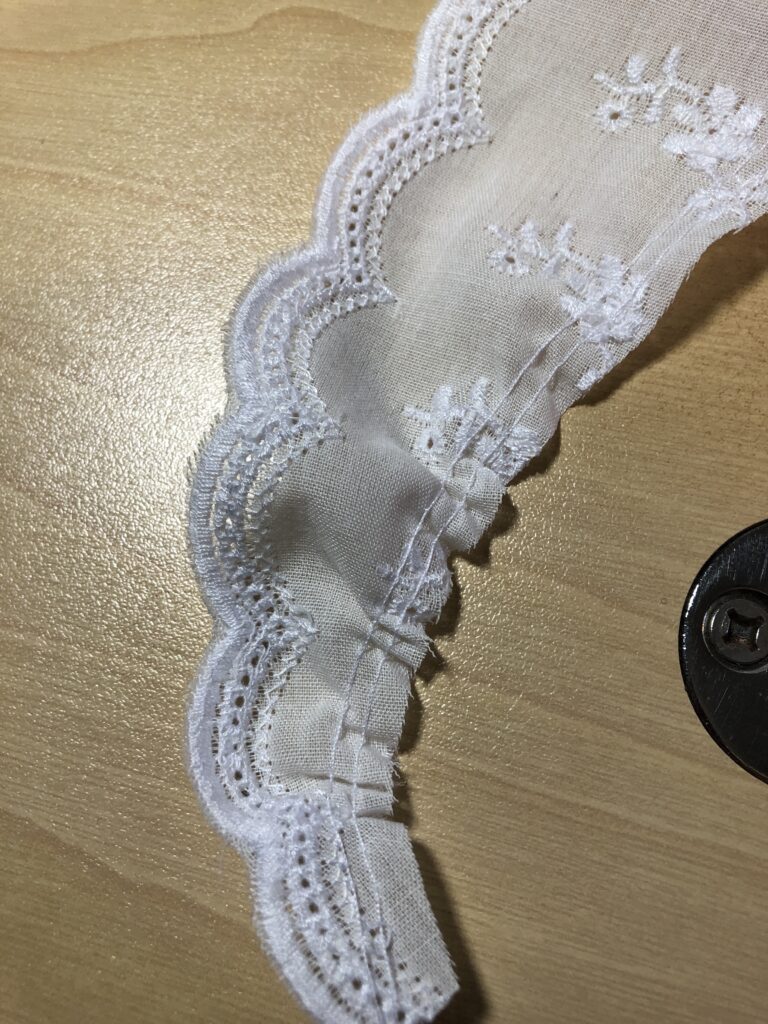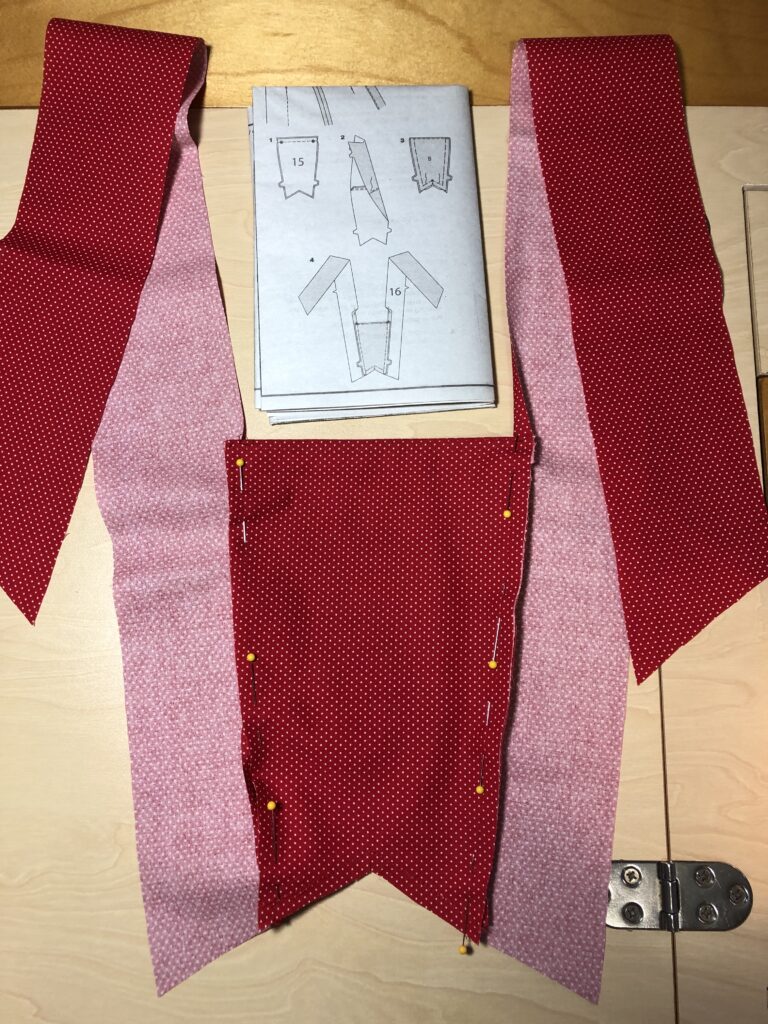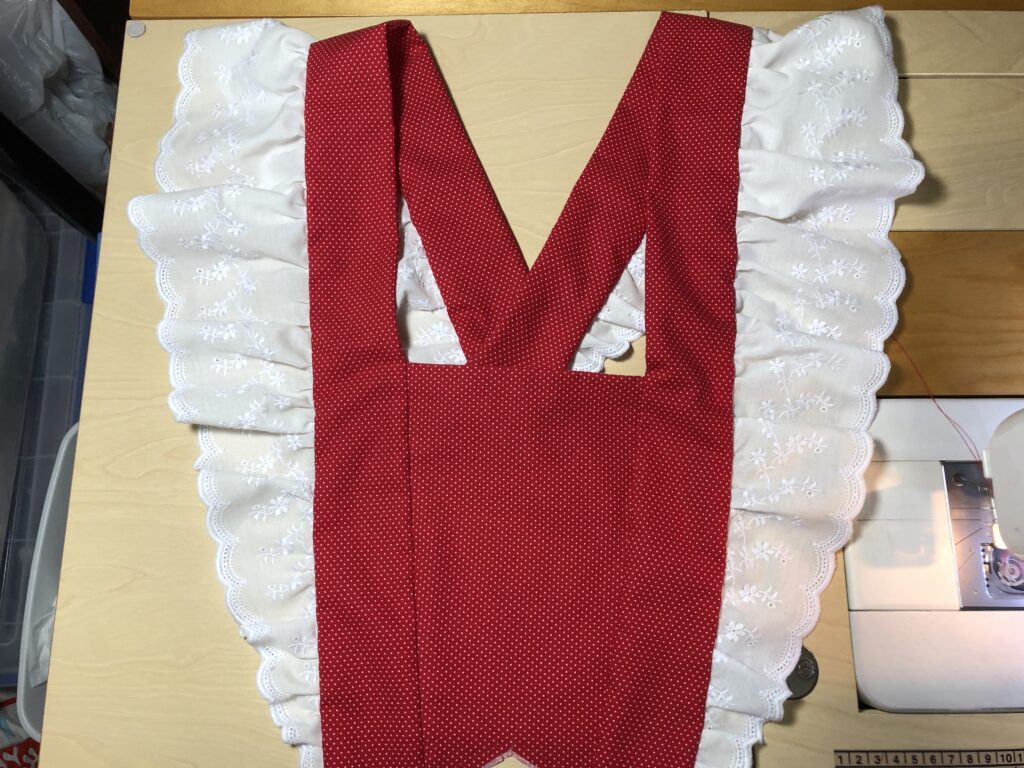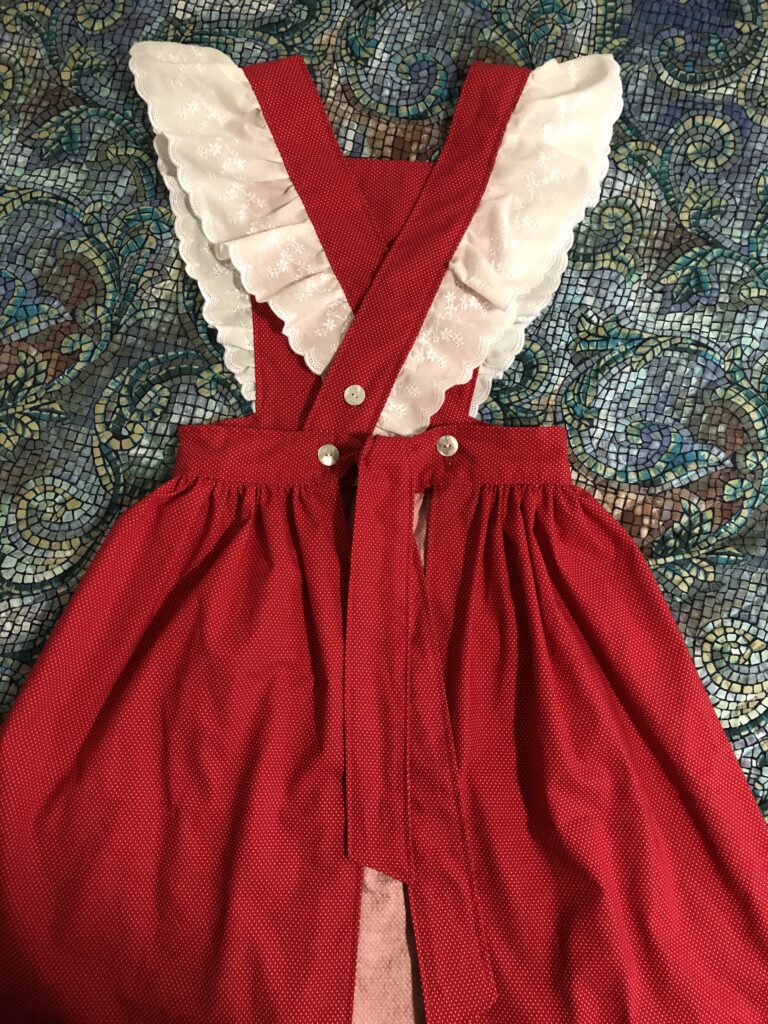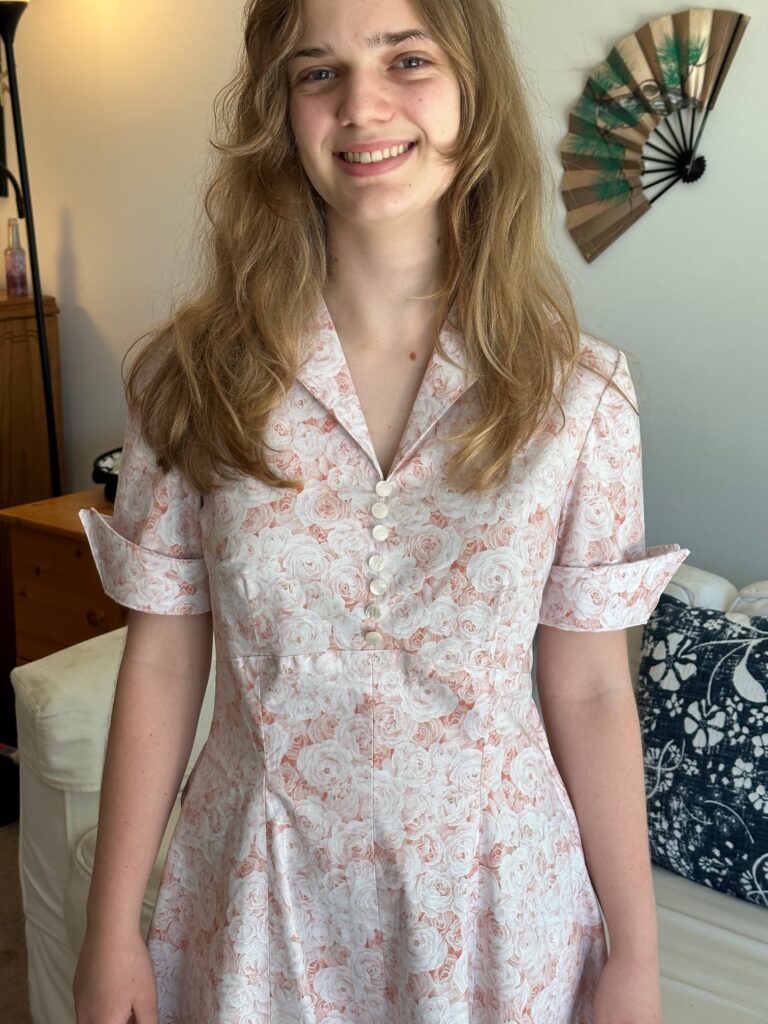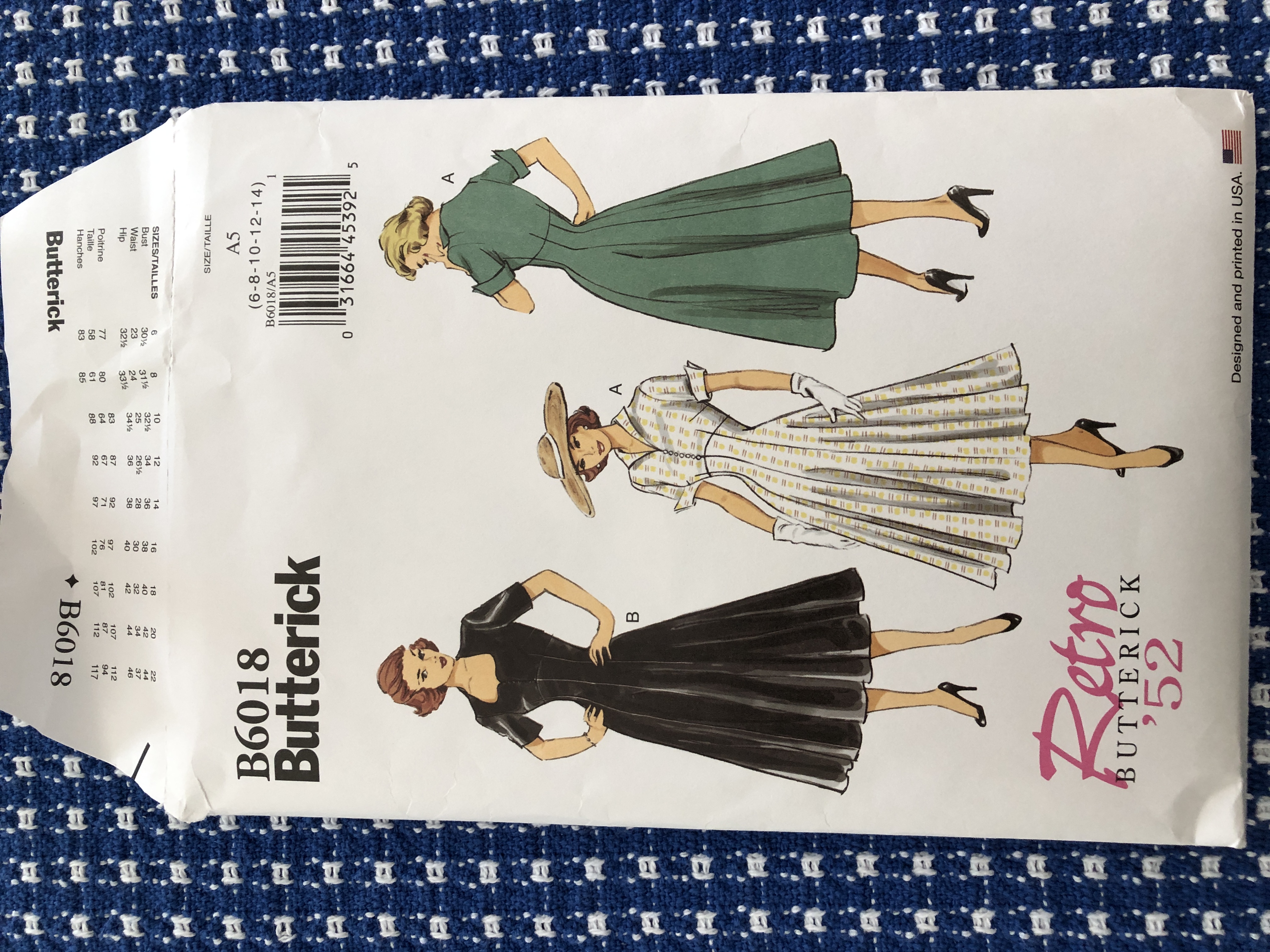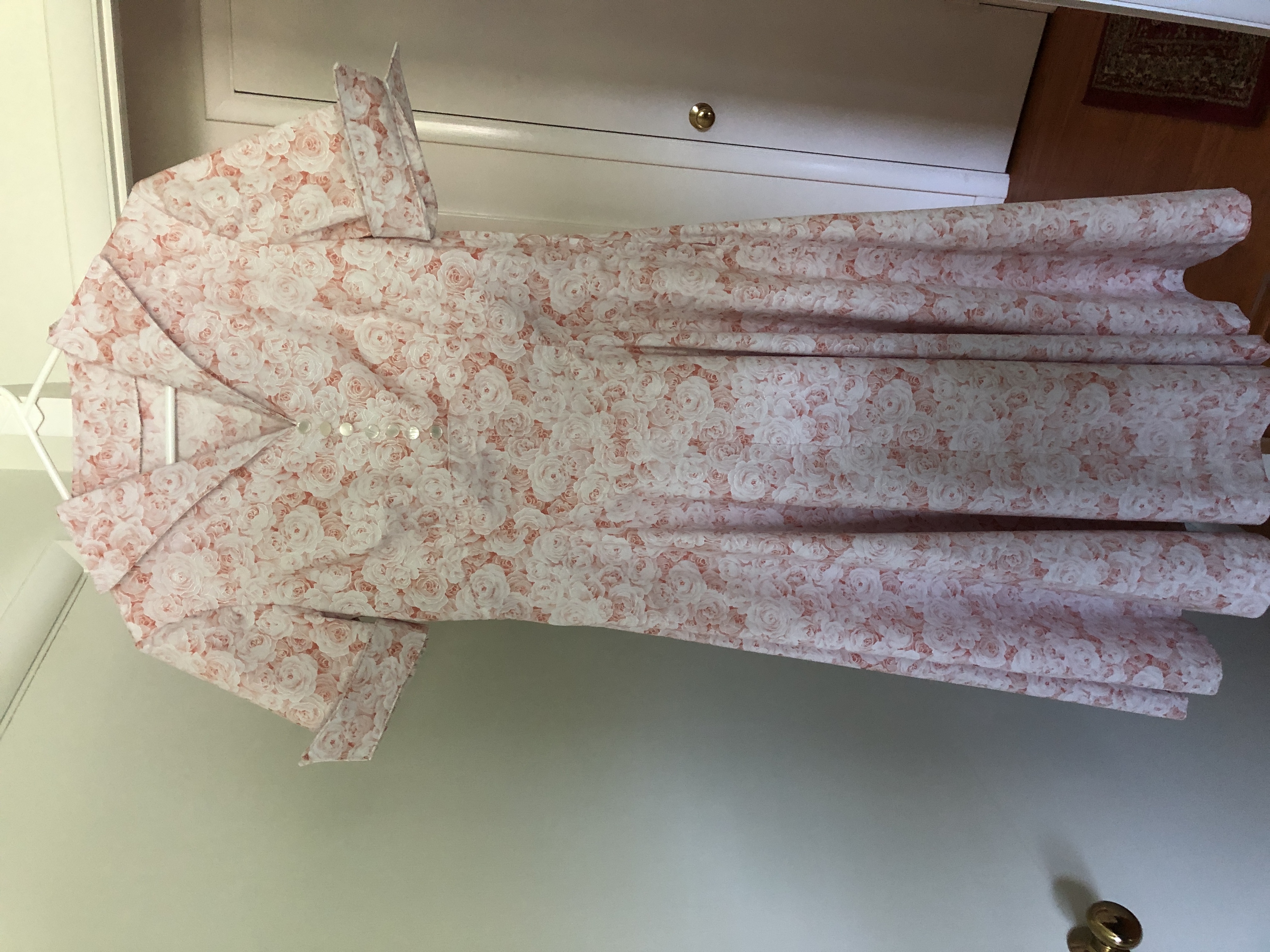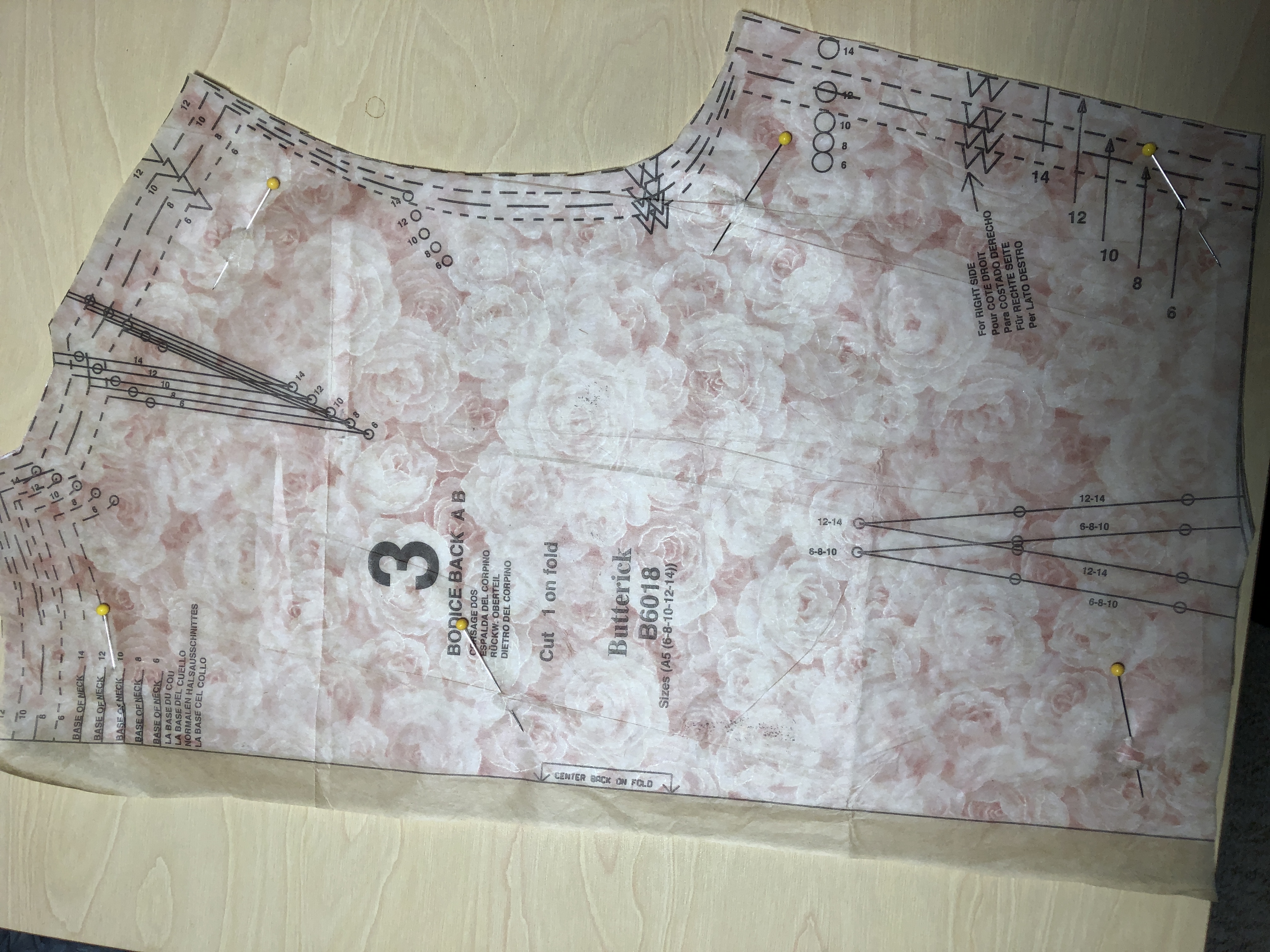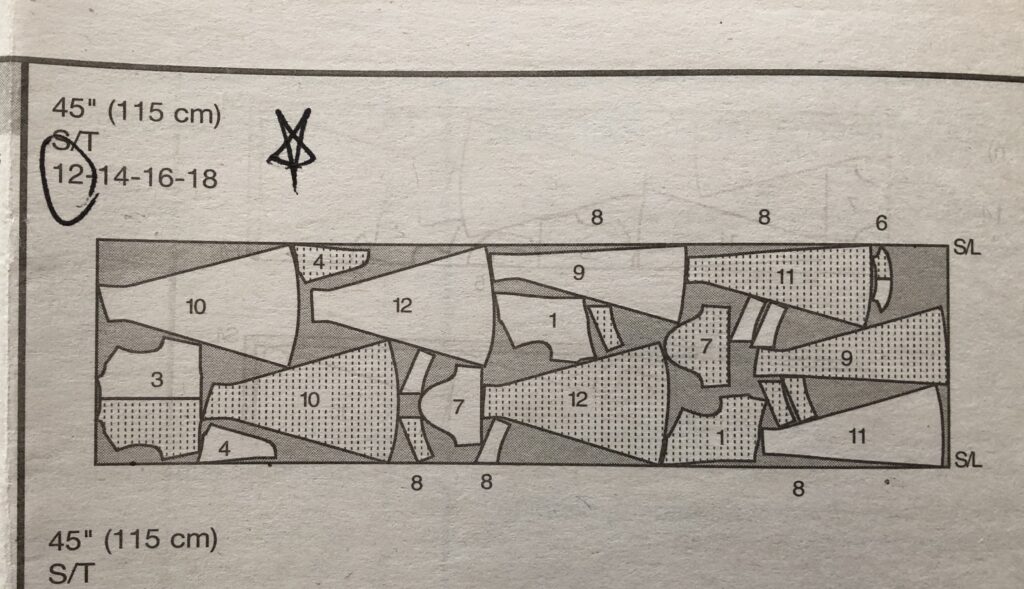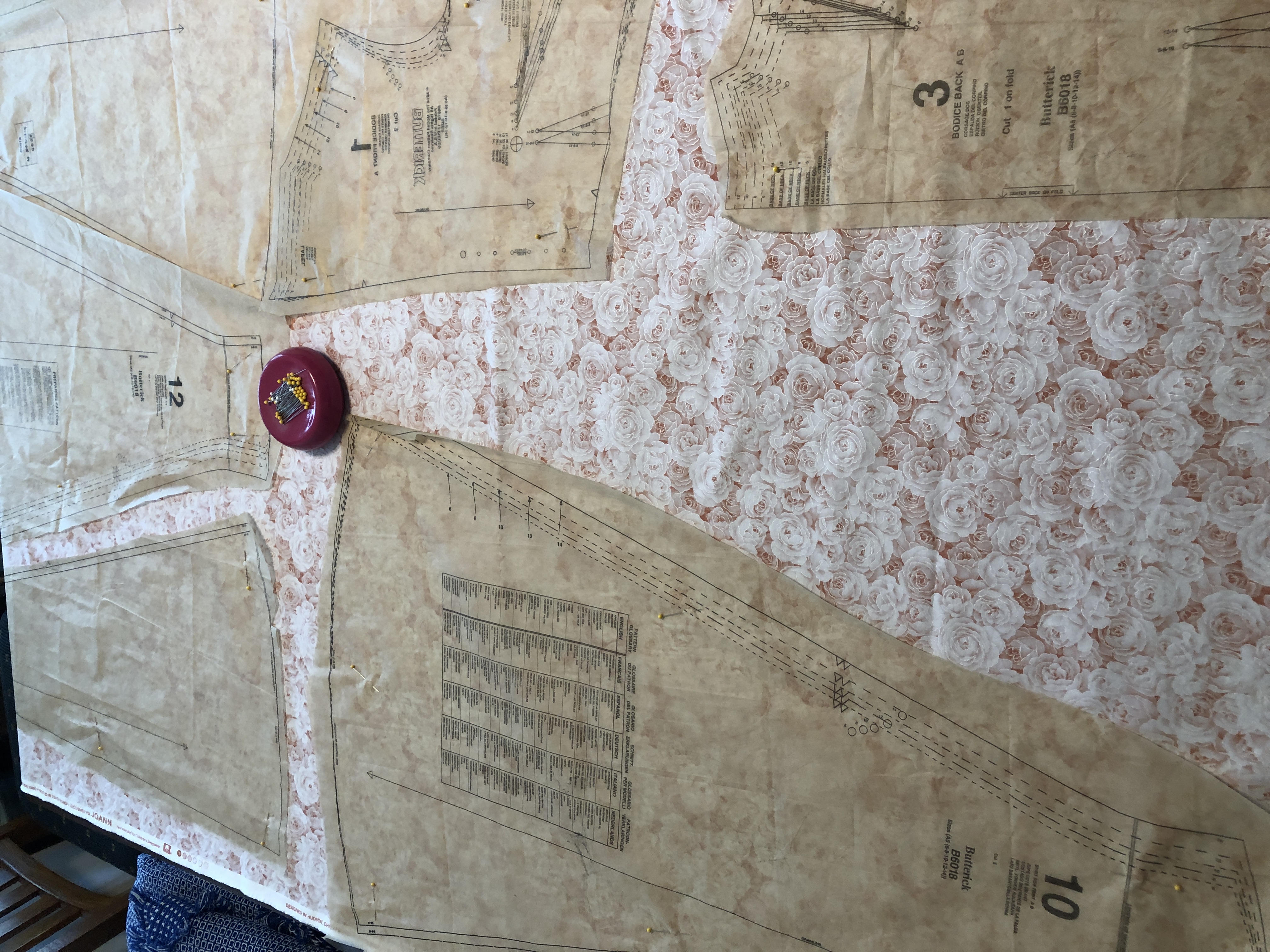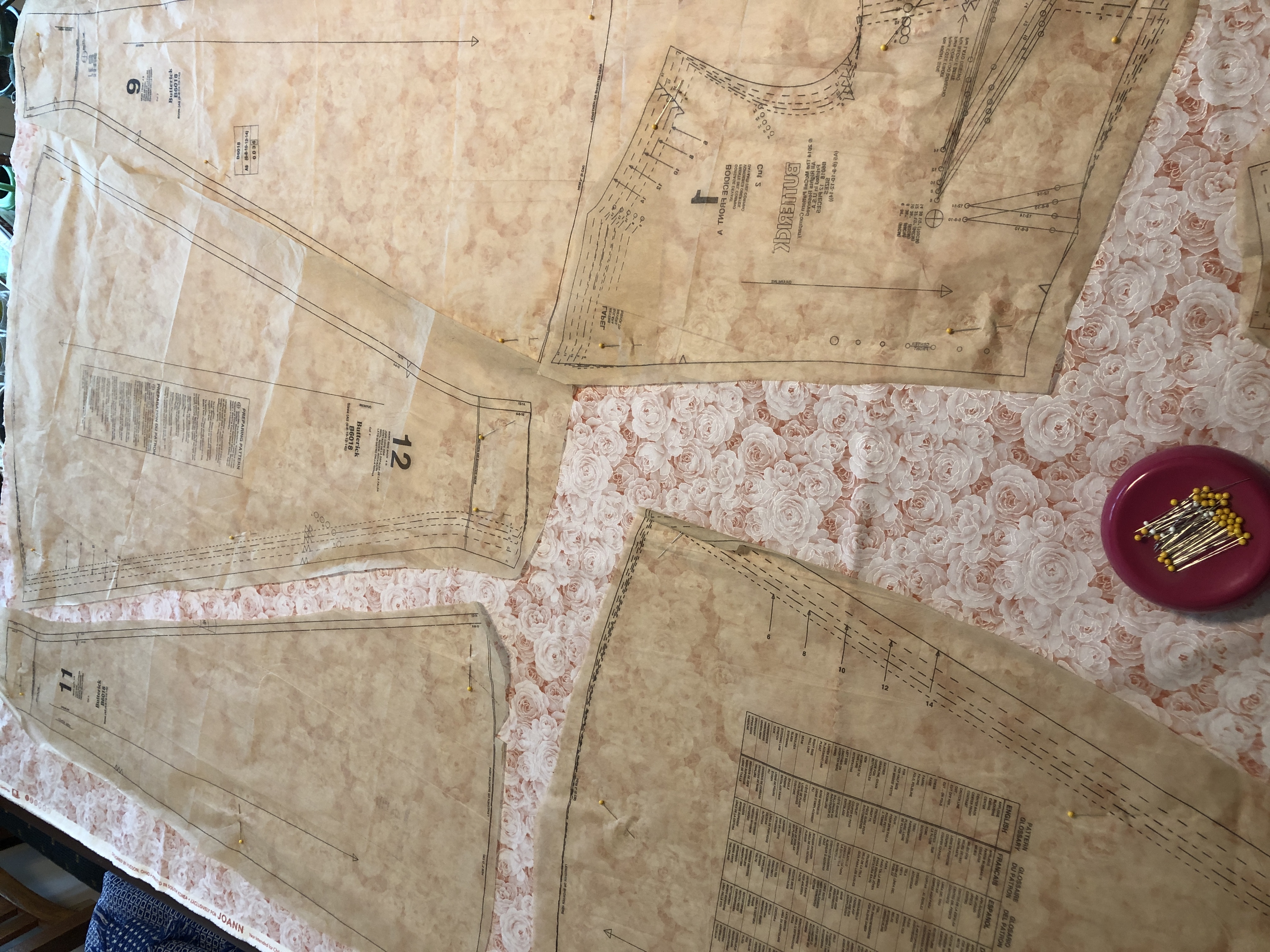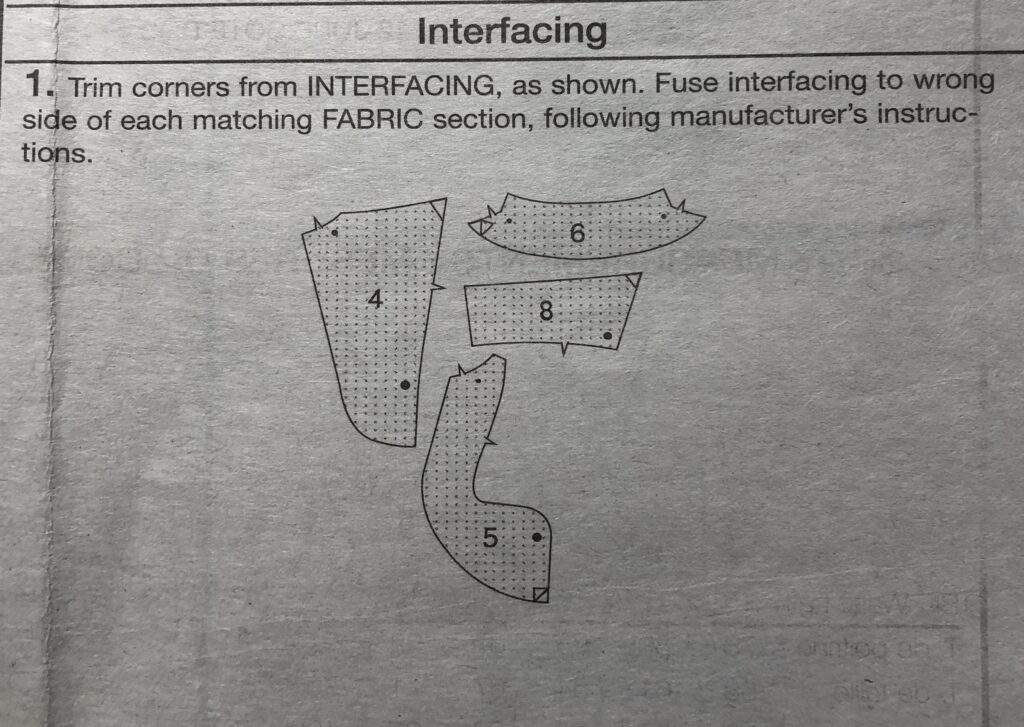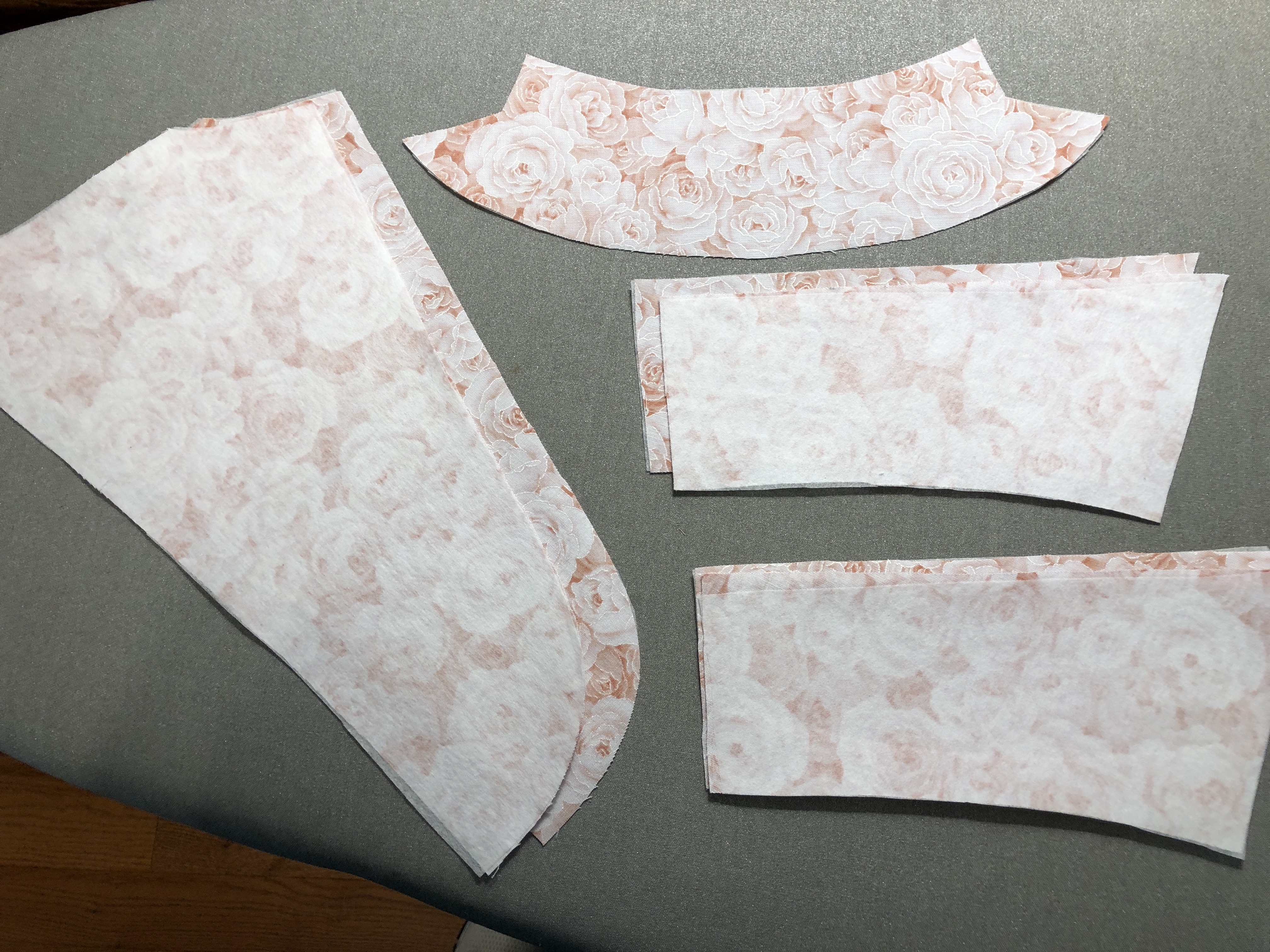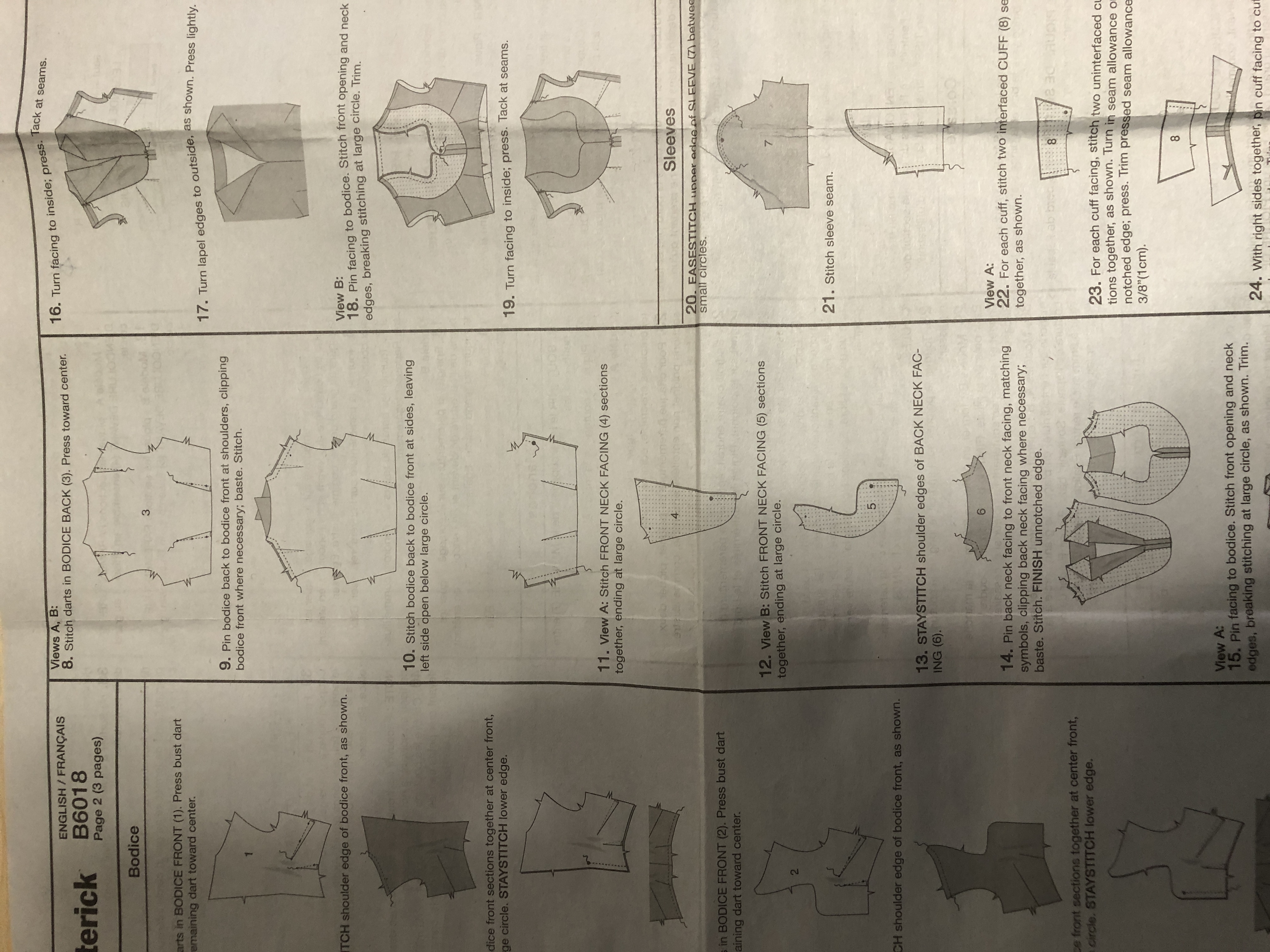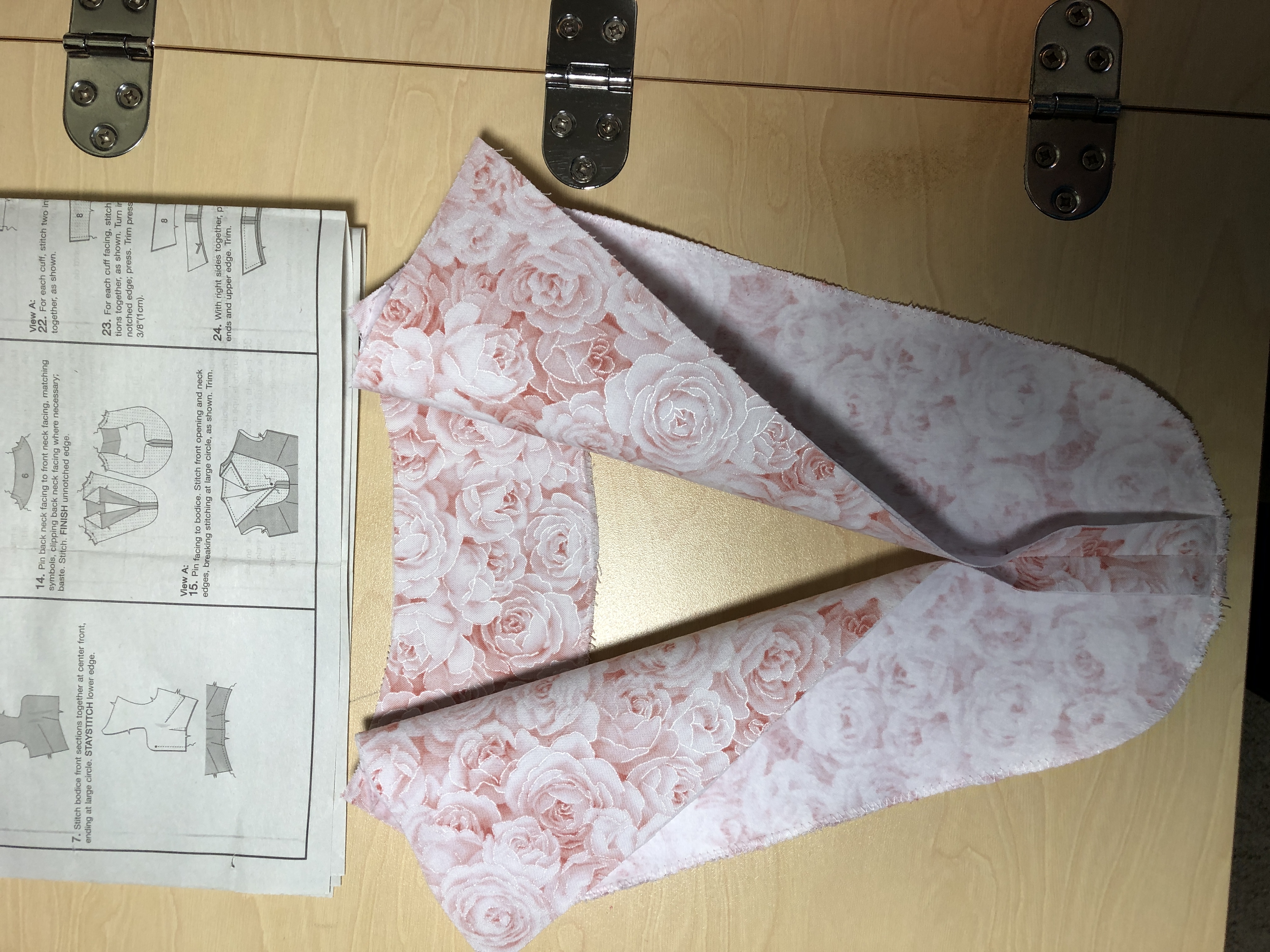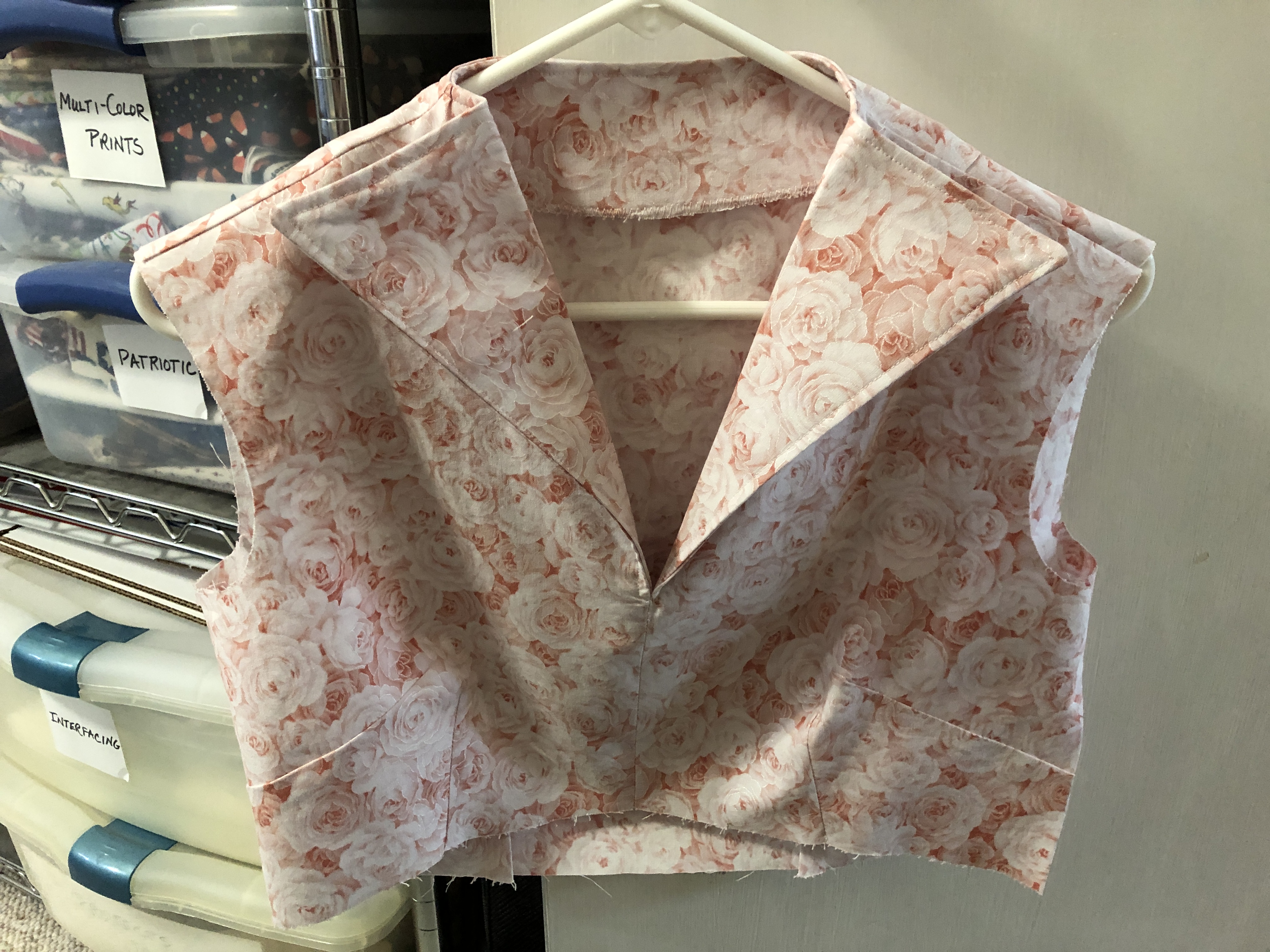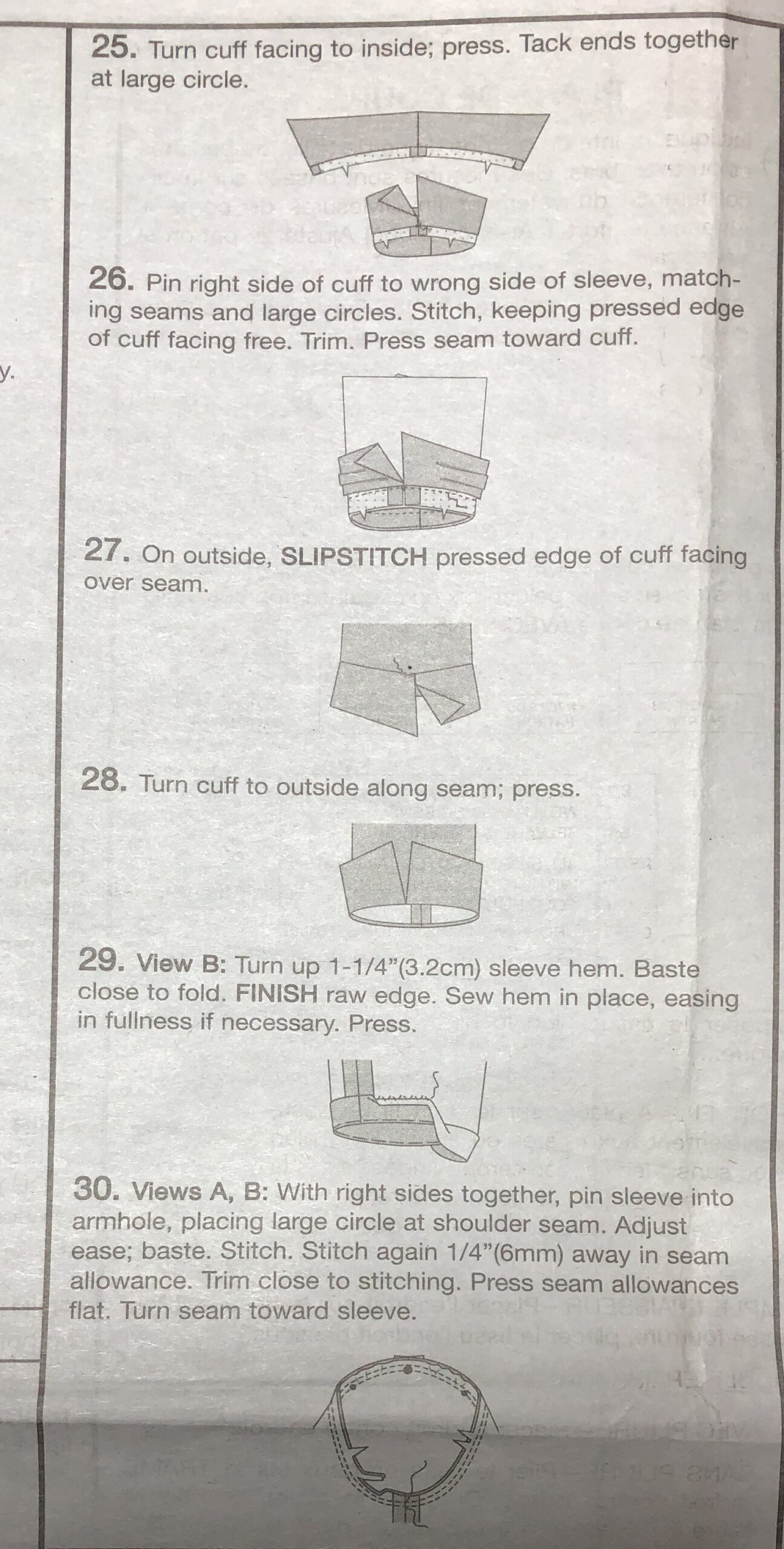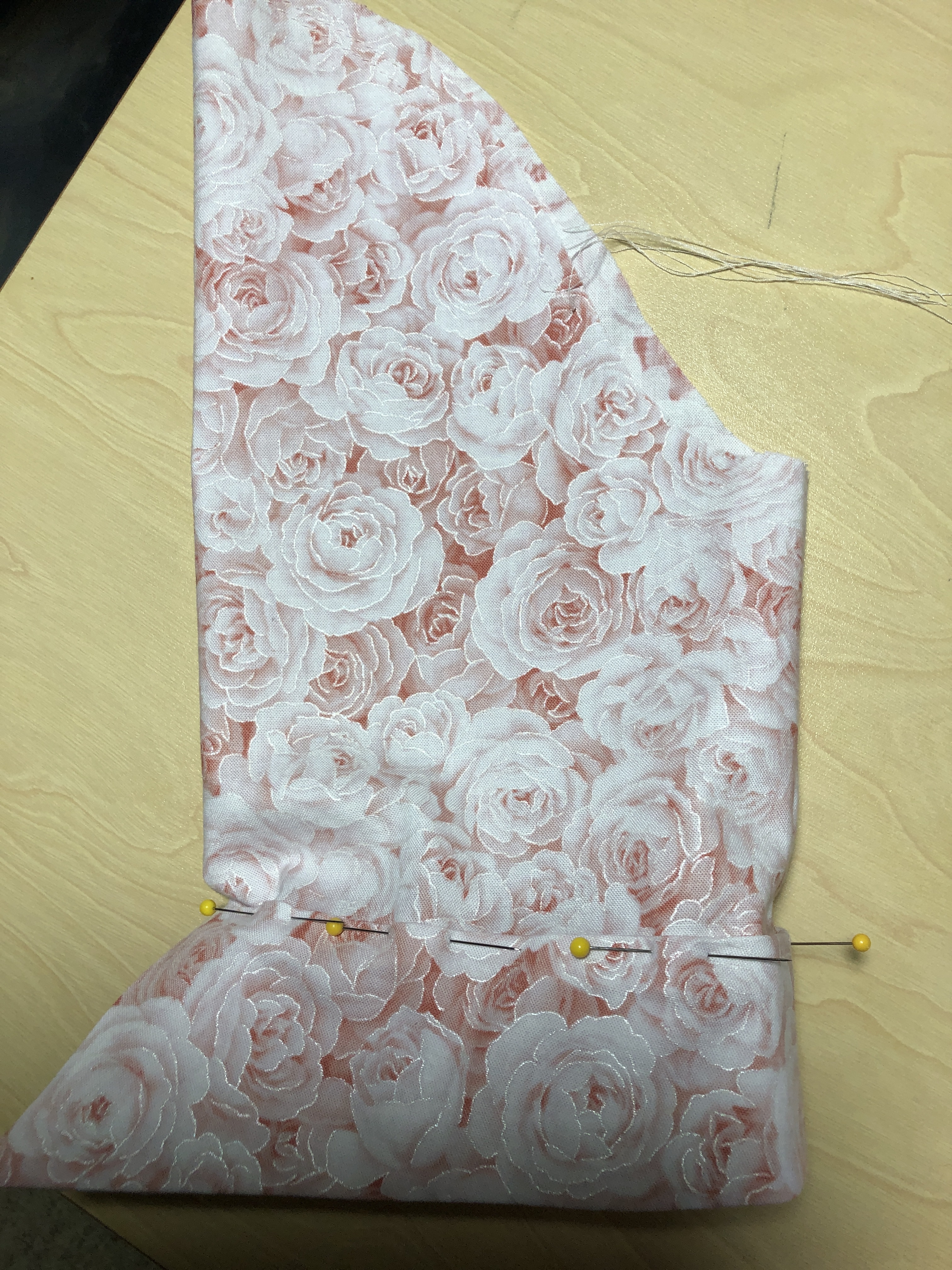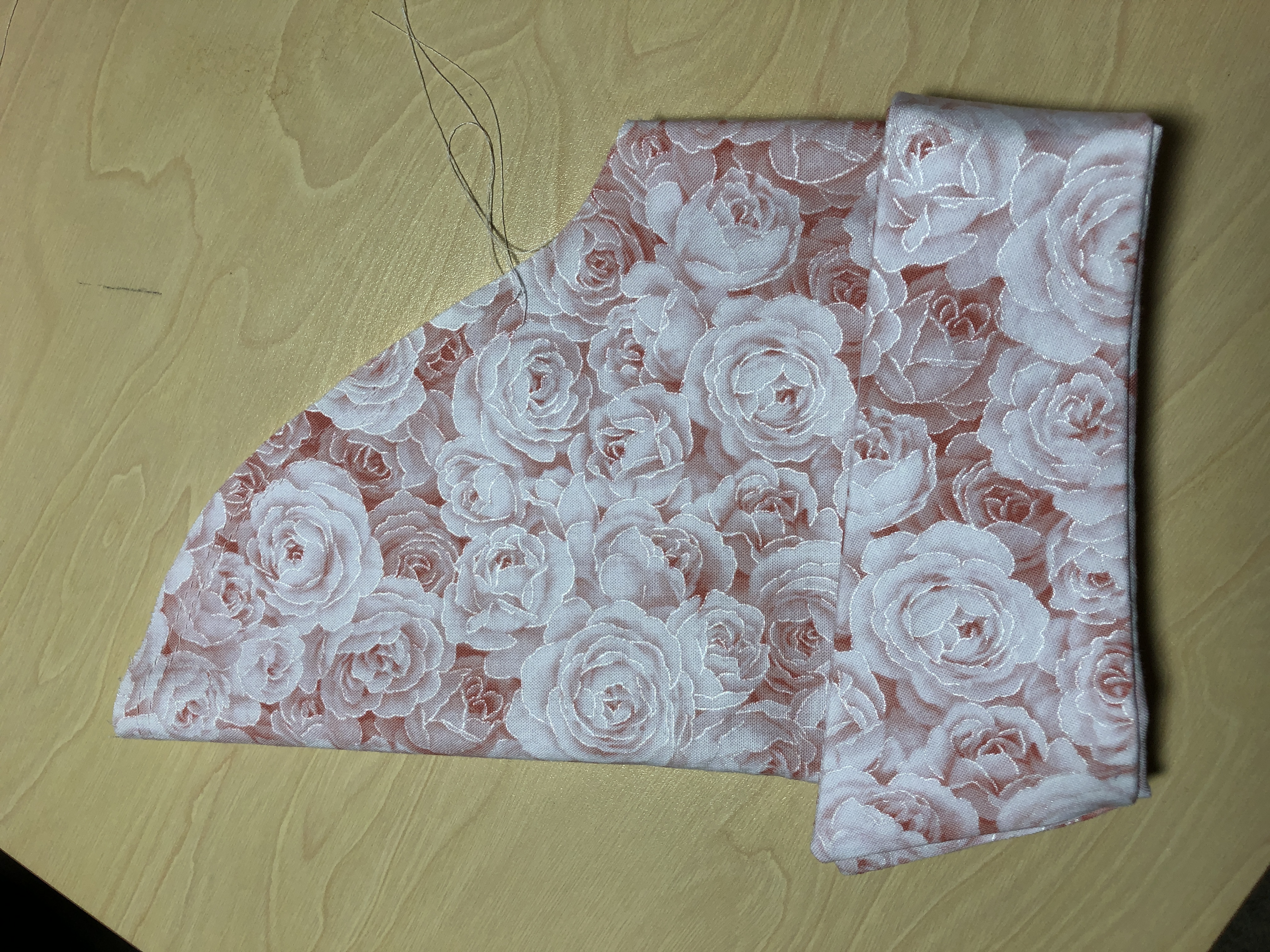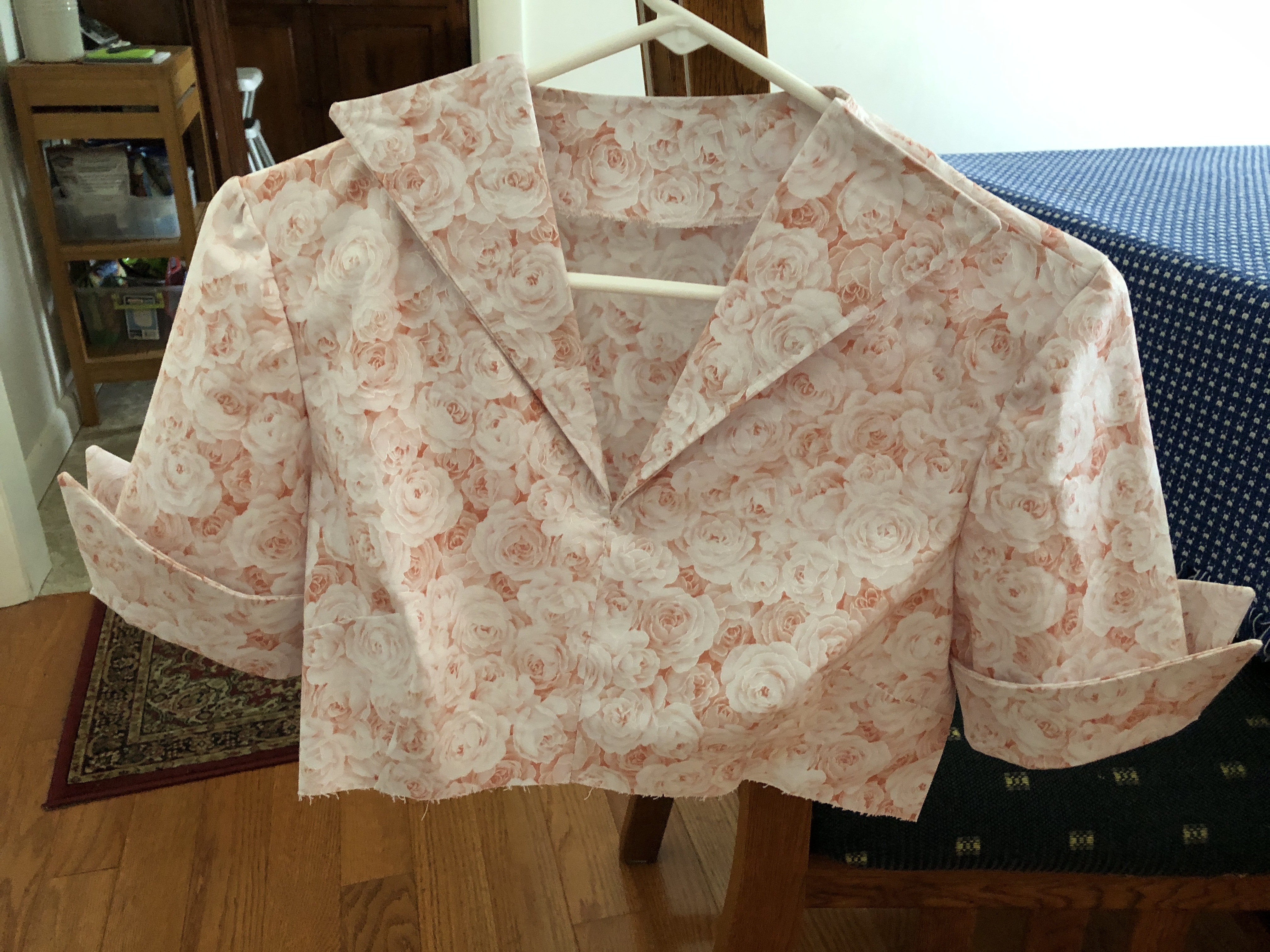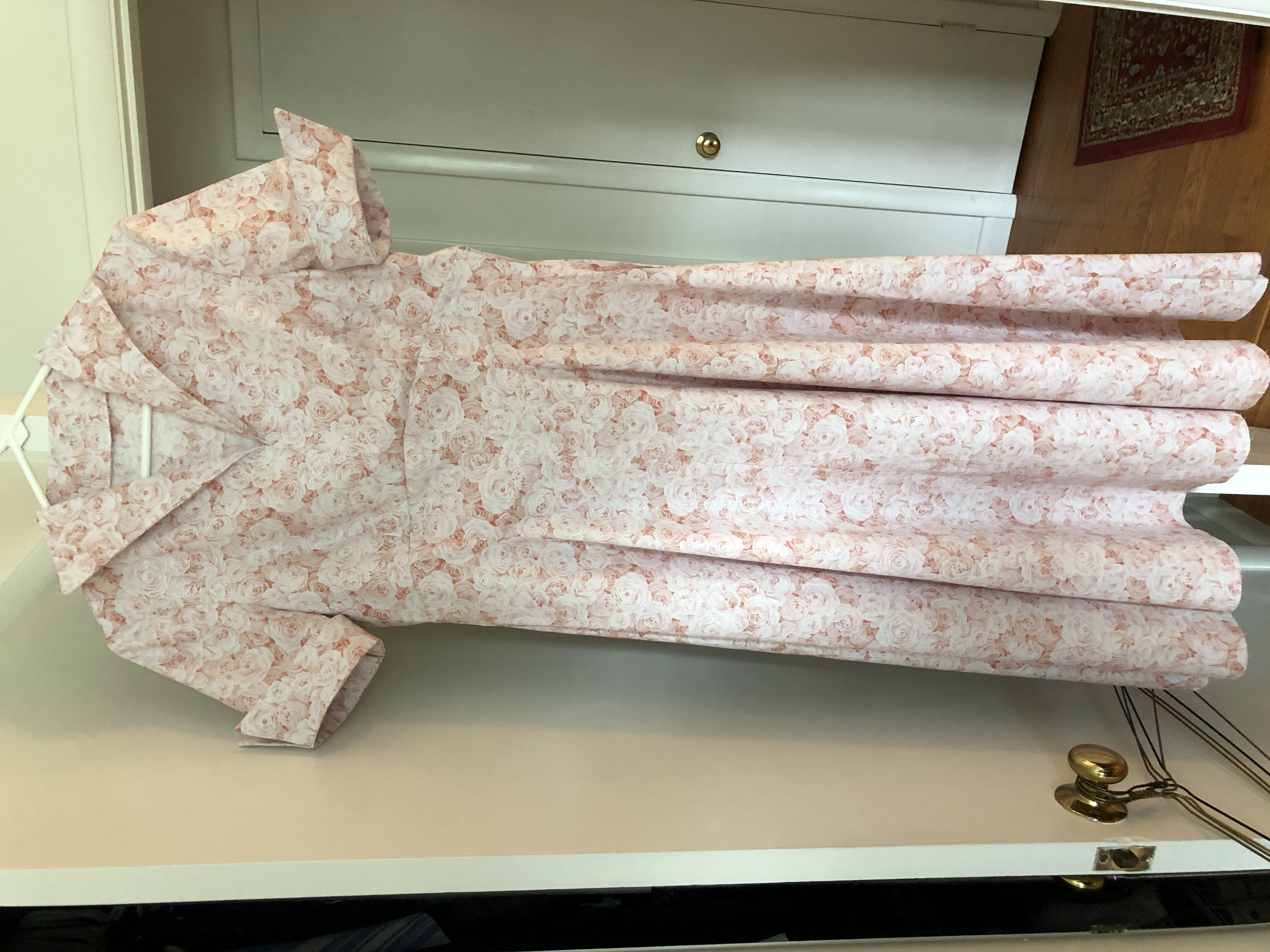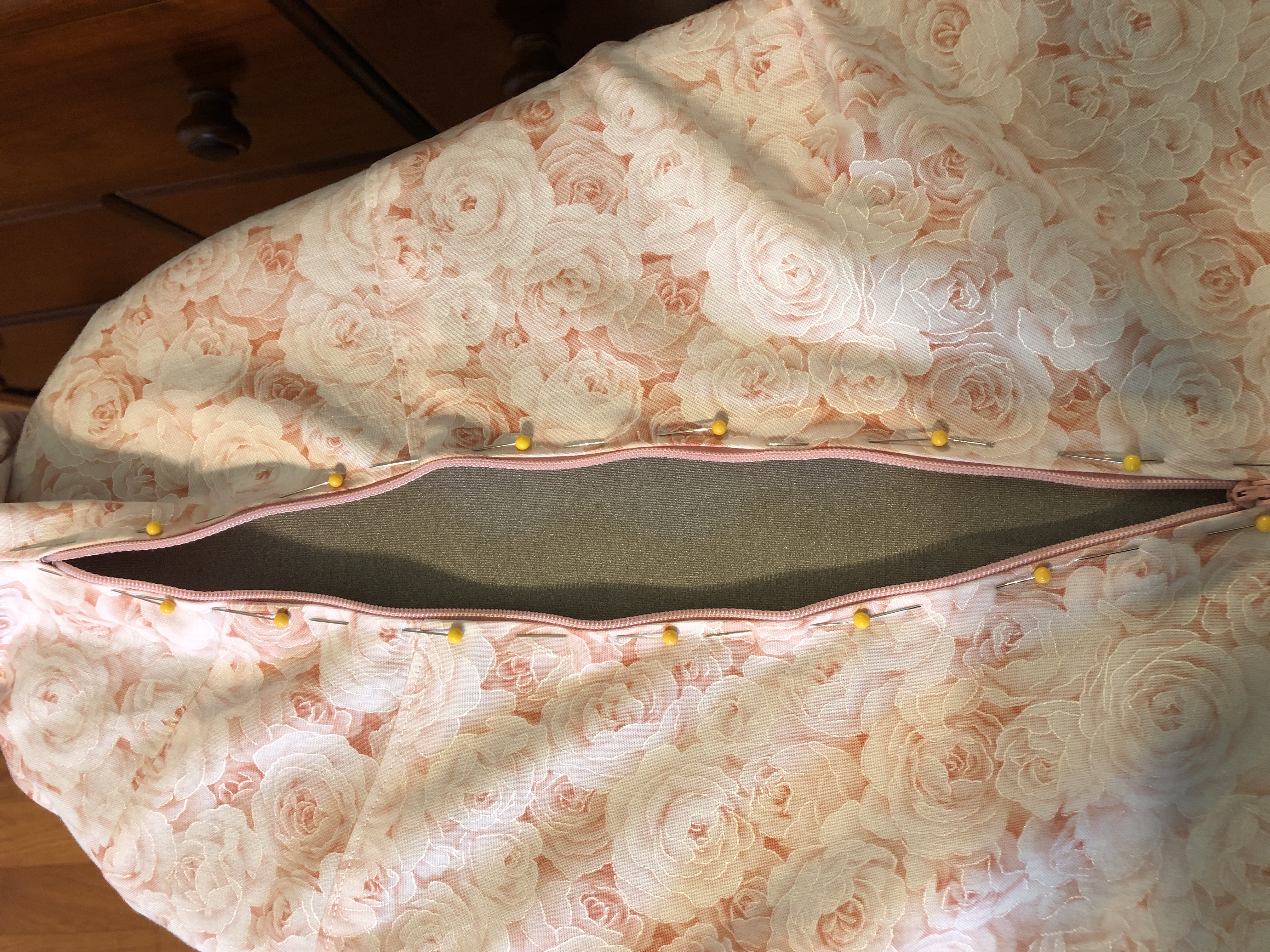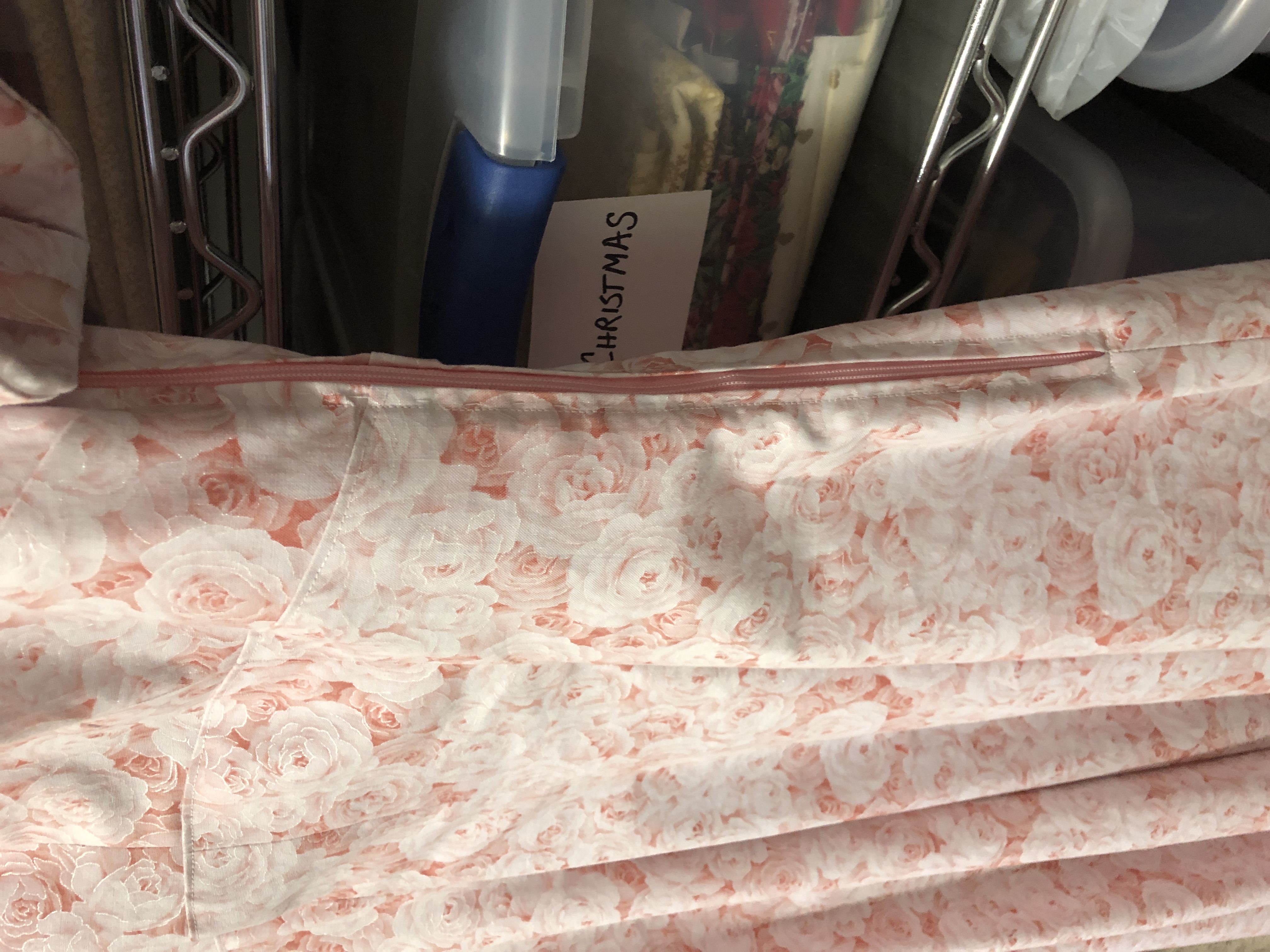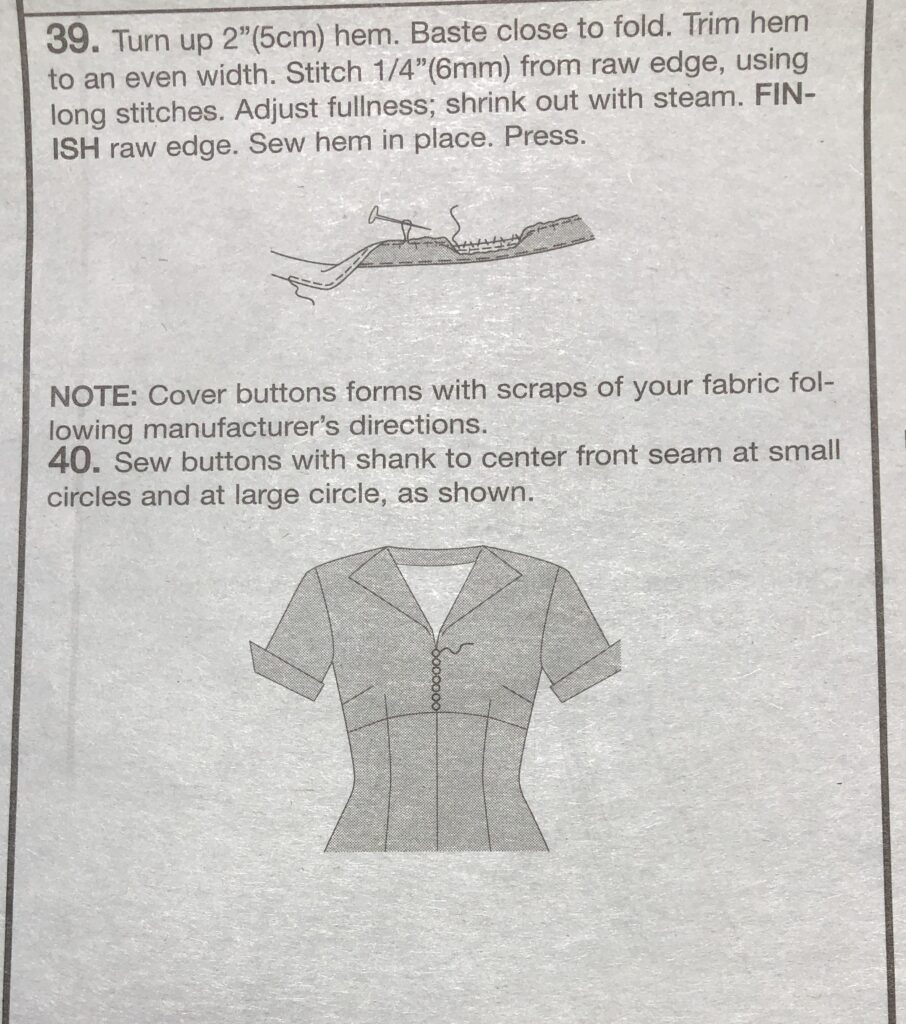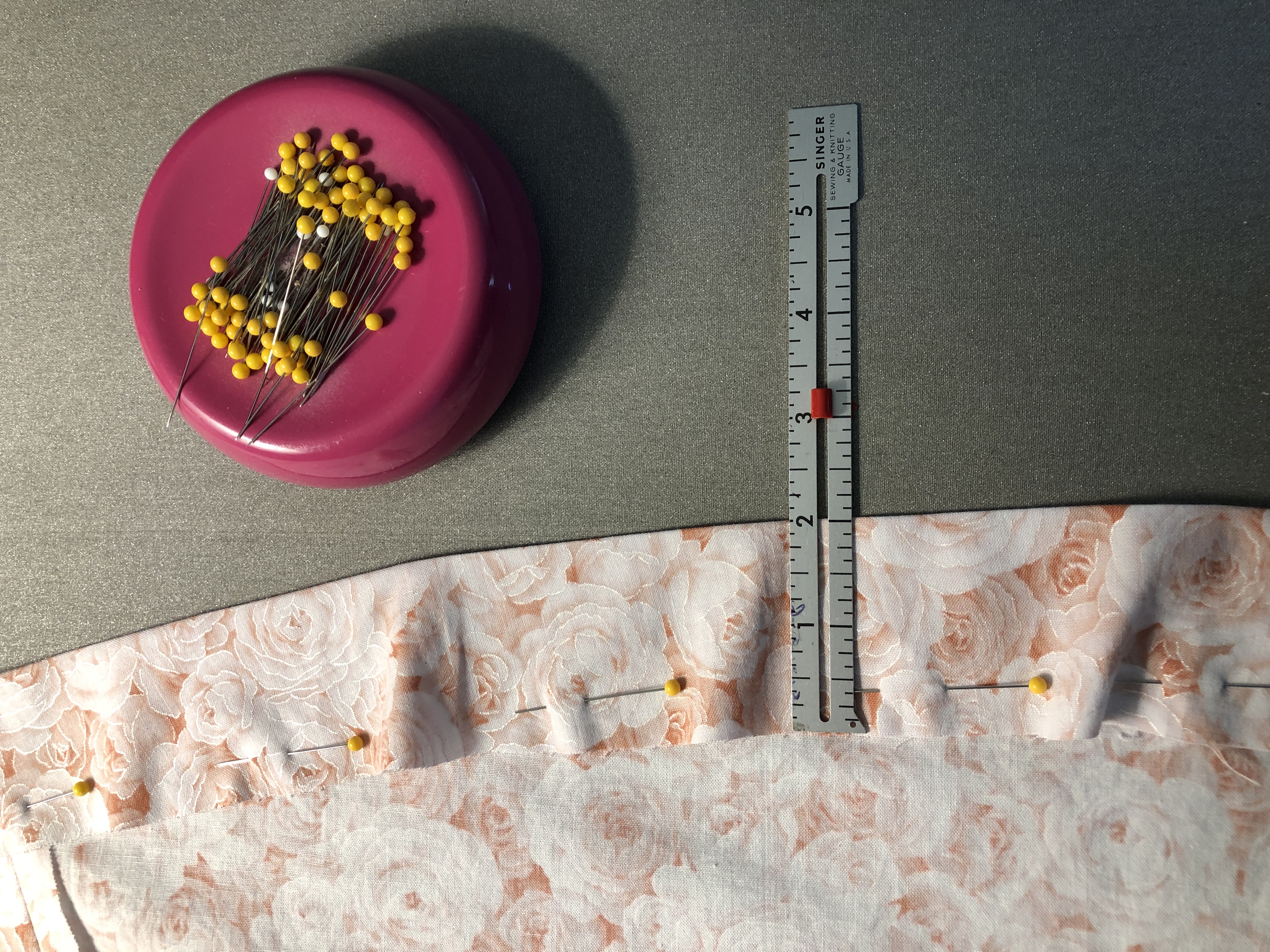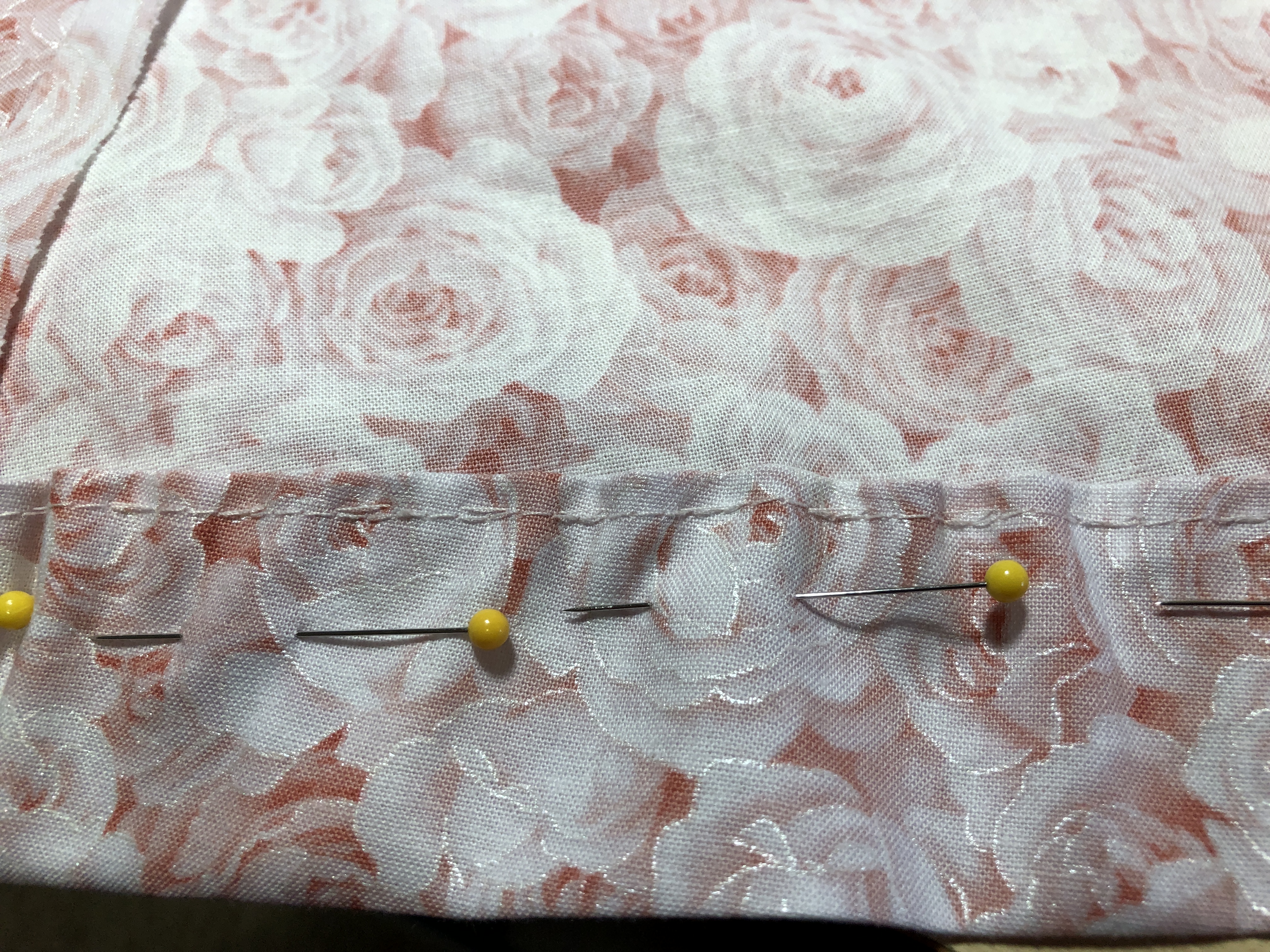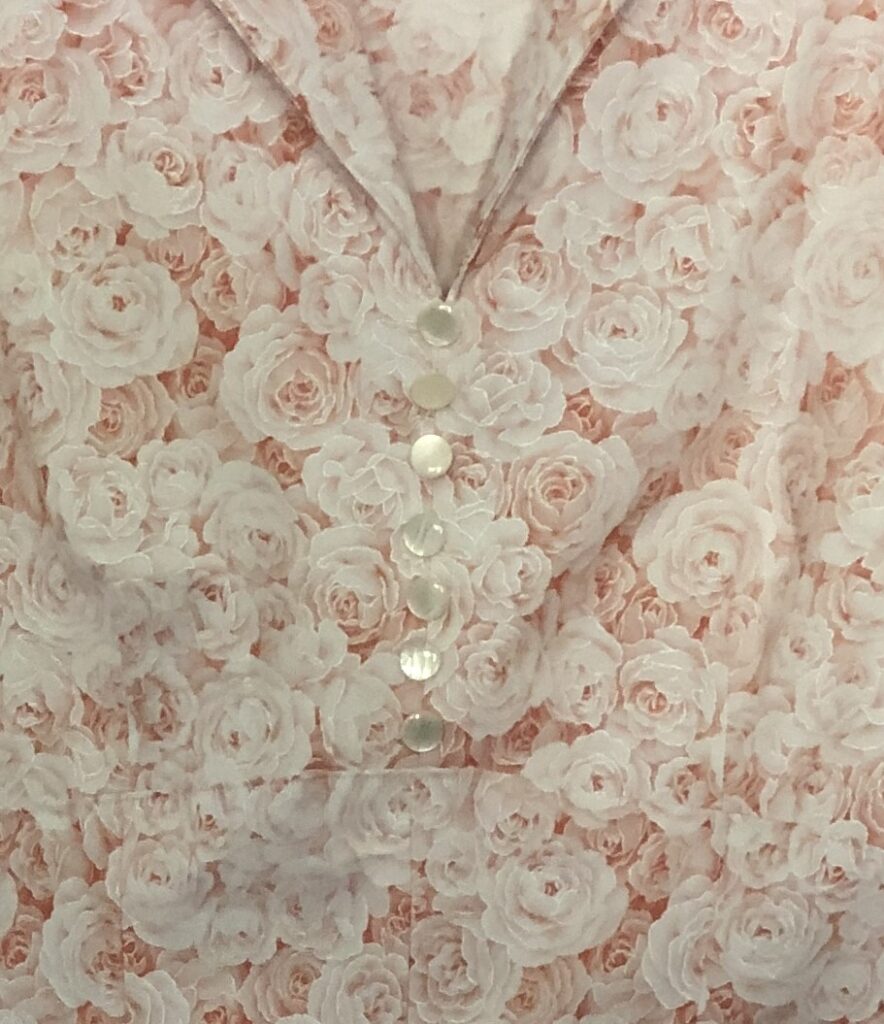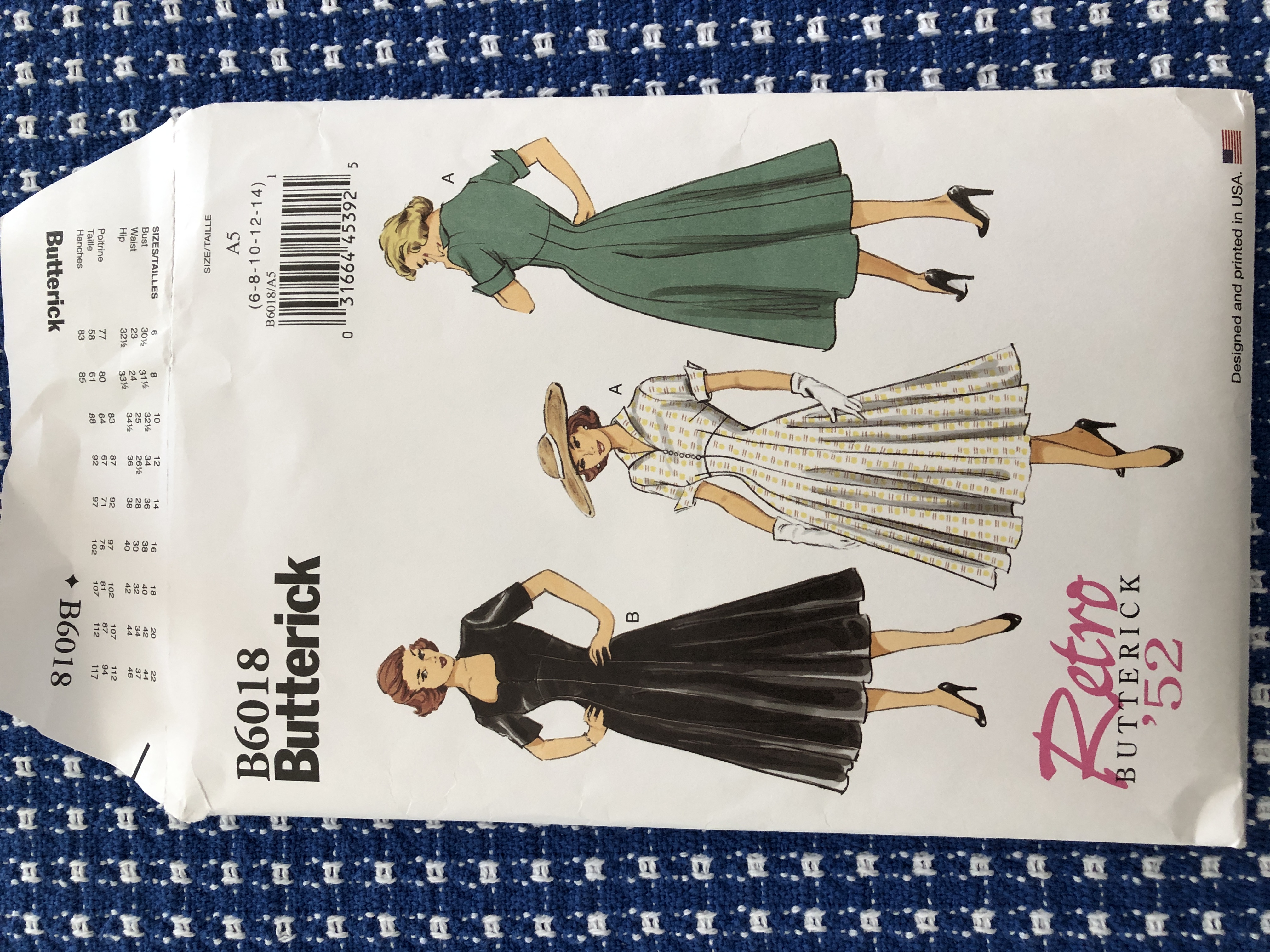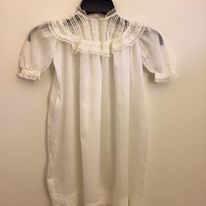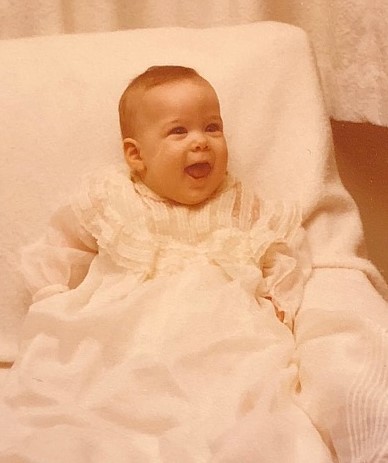Just a quick post to show you the final pictures of the retro 1952 dress and the retro 1940s aprons. The dress was made for my oldest granddaughter (17) in California. She and her family visited this past summer and spent time in several thrift shops and the local antique store looking for “vintage” clothing. We had fun at the fabric store finding patterns for retro clothing…meaning made new but in a vintage style.
Follow-up of the Retro 1952 Dress
We ended up with this pattern.
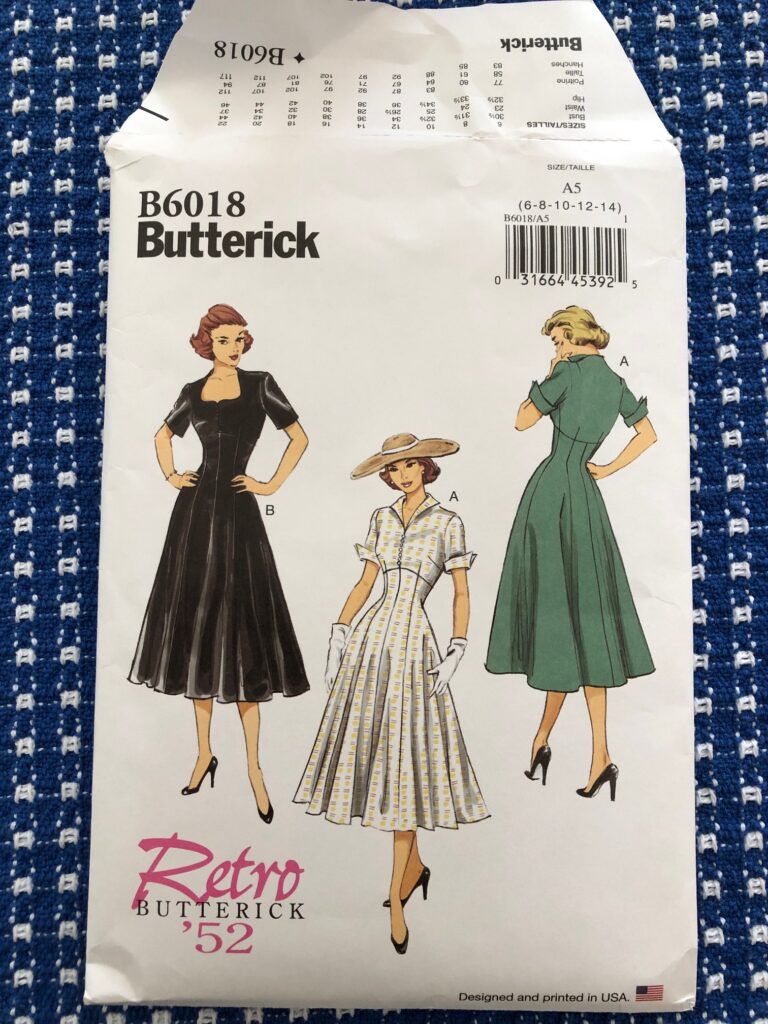
After she and her family left town, I had the challenge of making the dress with no way to “fit” it to her…I had just her measurements! You can read about the process of making the dress at this link:
https://marykisner.com/making-a-retro-1952-dress/
Fortunately, the dress fit just fine, but it didn’t “look” like the pattern picture.
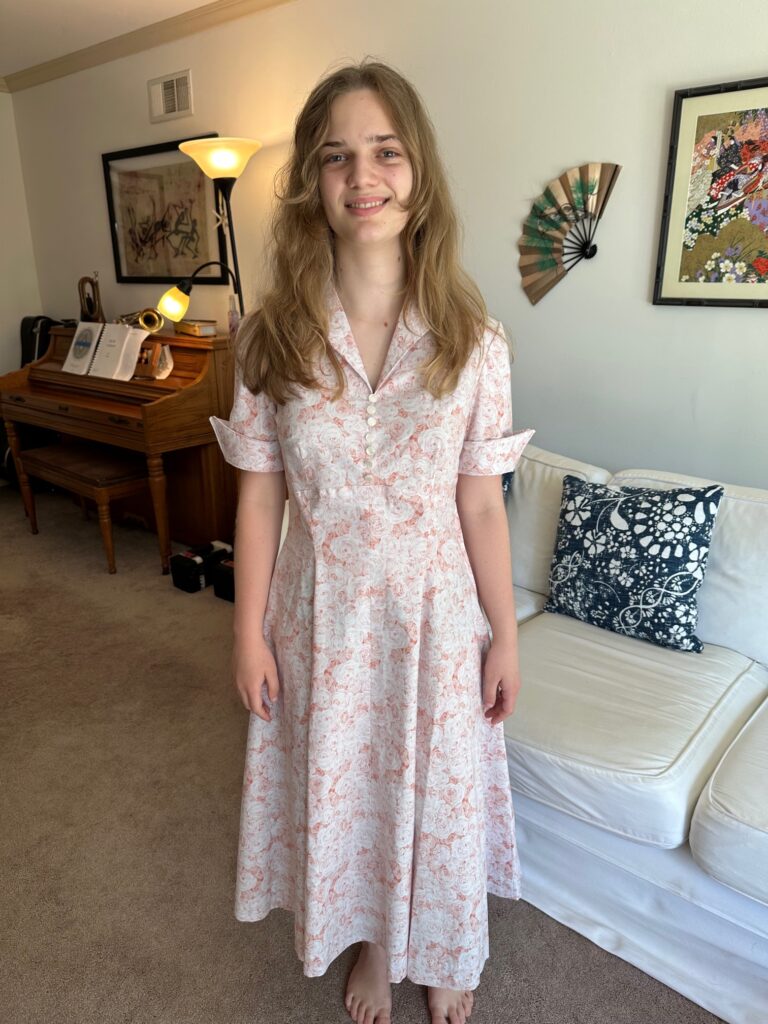
I finally figured out the skirt was full, but it just didn’t look full. It needed a gathered slip to give it shape! So, I ordered a slip and mailed it to her. Now, the dress looks like what I imagined…EXCEPT…since she wasn’t here, I couldn’t estimate the length of the slip. I left it alone and mailed it to California. Of course, the slip is about 4″ too long!
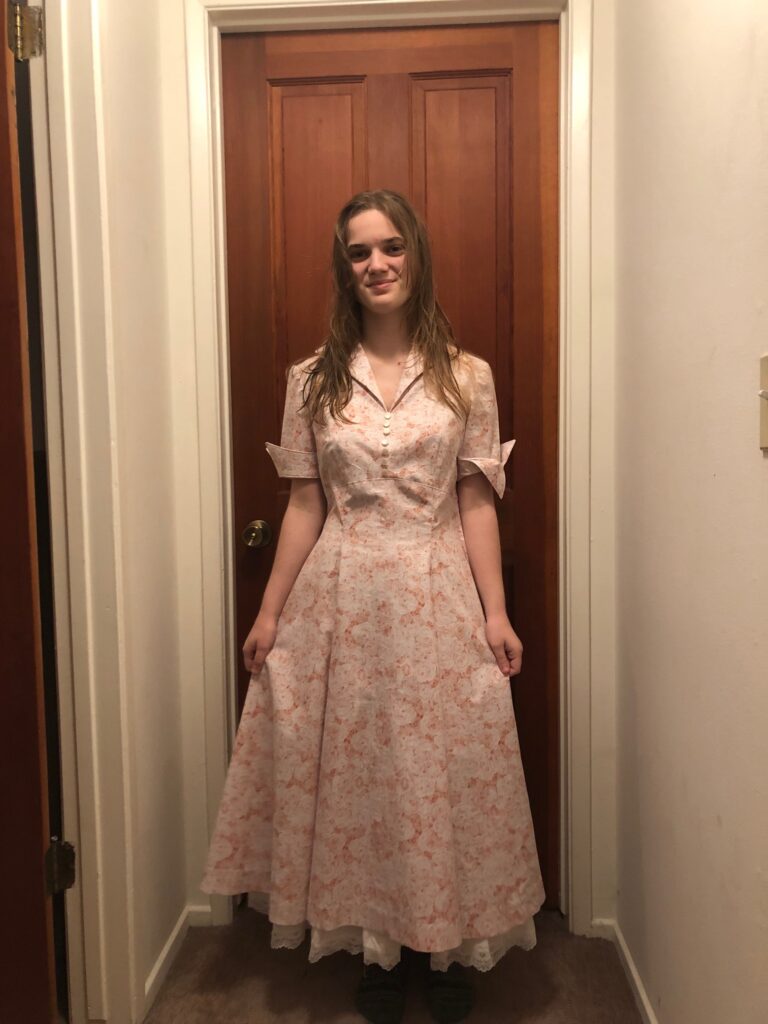
However, she loves it! I guess it could be a new fashion statement…with the lace showing. Warning to my son…if she decides she doesn’t want the slip showing, you’ll either have to mail it back to me or cut it off and hem it yourself! (Luckily, he knows how to do that!)
Follow-up of the Retro Aprons
Then, I found a pattern for a set of Retro 1940s aprons.
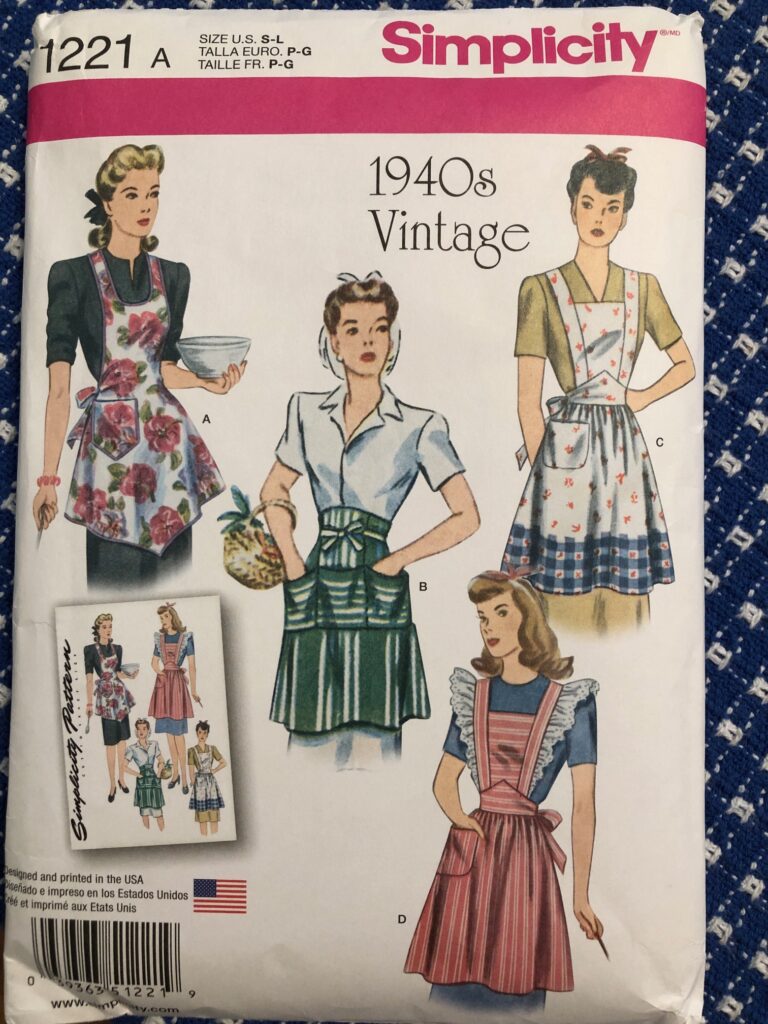
I knew I wanted to make one like the pinafore apron and possibly the half apron, like the one in green on the pattern. If I made two, then both my granddaughters could bake together! You can read about making these aprons here: https://marykisner.com/making-a-retro-1940s-apron/
The pinafore apron was a real challenge and the half apron with pockets was much too complicated! (I don’t remember the apron I made in Home Ec. class around 1960 being this complicated.)
I can’t decide if I’m just out of practice in following complex instructions or if clothing construction procedures have been simplified over the years.
The pinafore apron turned out fine:
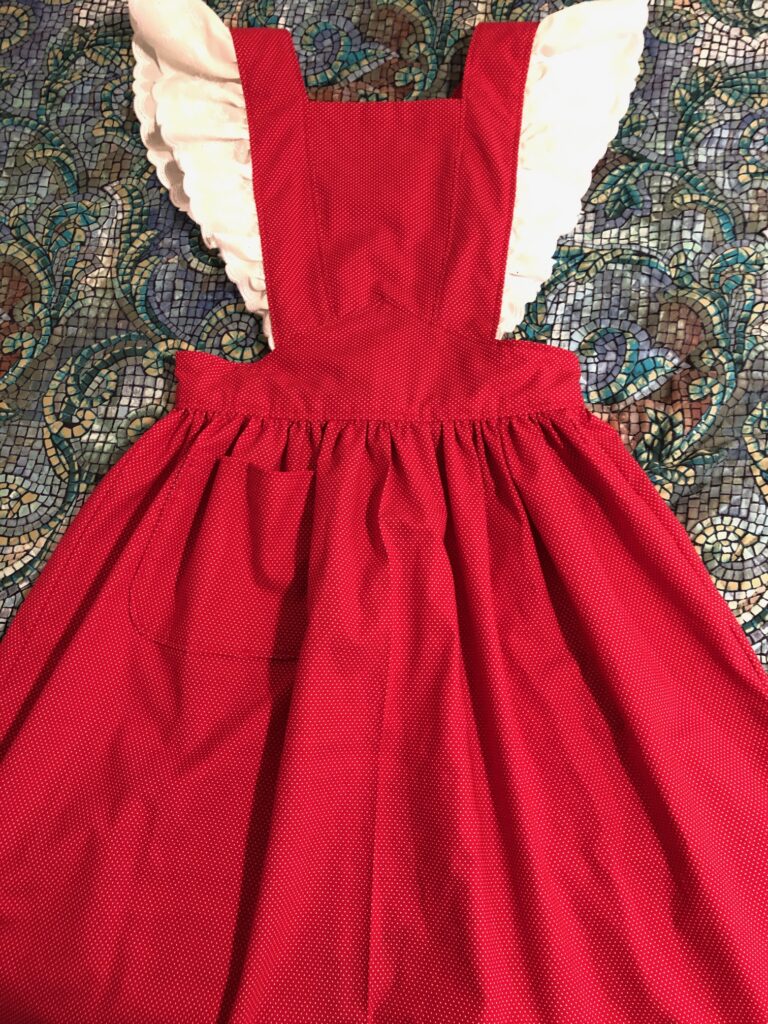
The half apron (in purple) was hard to photograph and needed to sit above the waist.
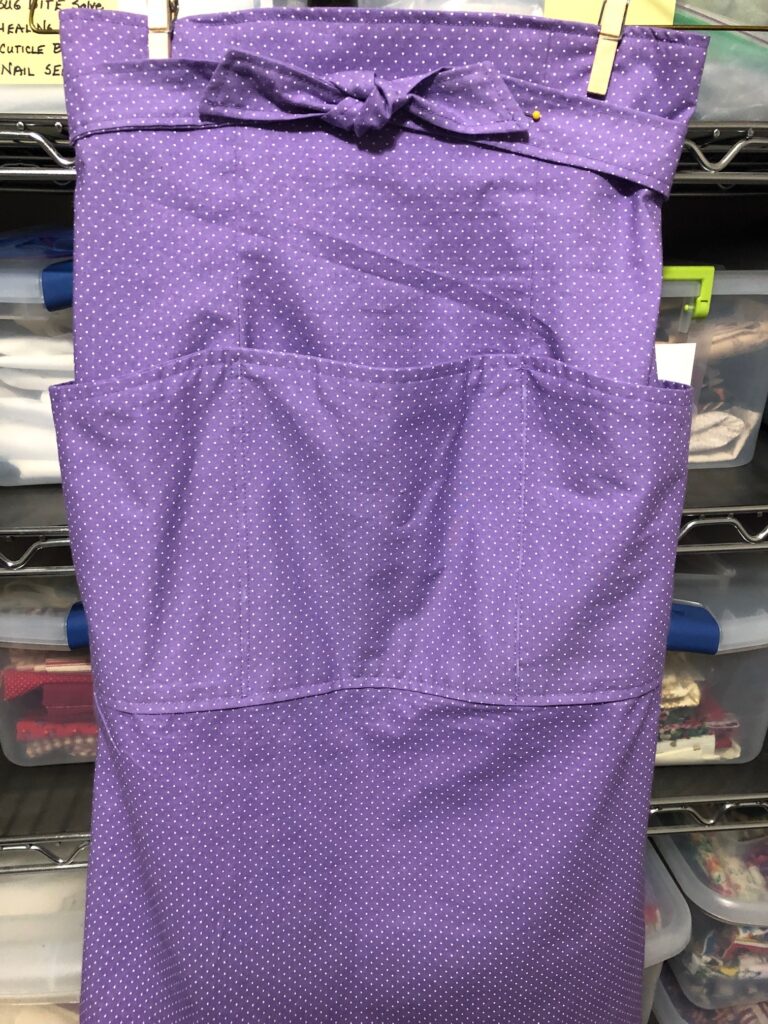
Of course, without my granddaughters nearby I couldn’t check the aprons for length. Turns out they were willing to put them on and send me a picture. They said they loved them! Hopefully, the next time they bake cookies they’ll remember to wear them!
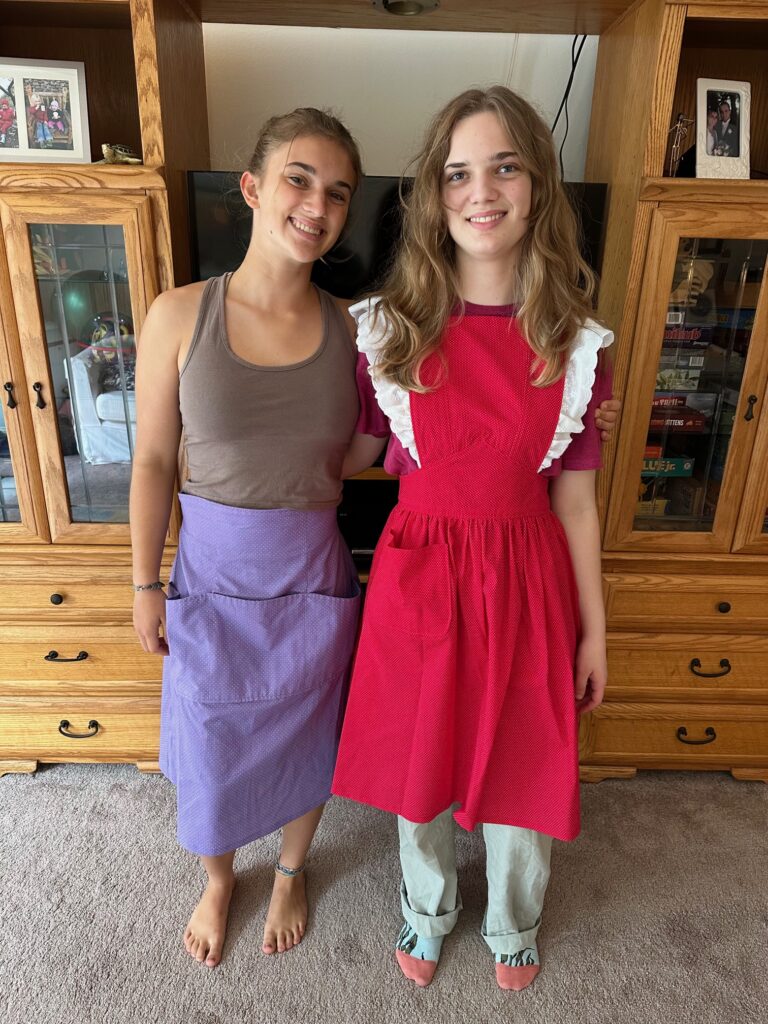
That’s the story of Mary making retro clothing so far. Who knows what I might try next?




